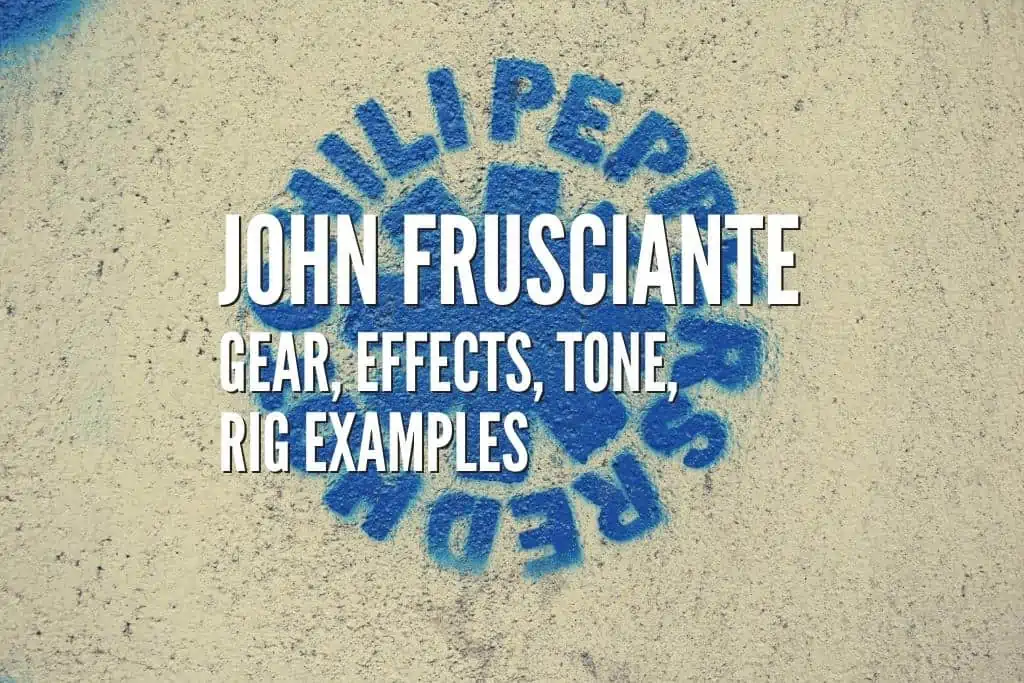John Frusciante is one of the most influential guitarists of all time with his passionate guitar playing style. The Red Hot Chili Pepper lead guitarist is celebrated with his simple yet effective and emotional playing style, his tone that pushes the limits with many effects, and his natural and organic melodic intention.
John Frusciante joined Red Hot Chili Peppers in 1988 after the former guitarist of the band died. With him, the band recorded some of the breakthrough tunes like Blood Sugar Sex Magik in 1991. However, John left the band in 1992 and started pursuing his solo career, which did not go well as he was struggling with heroin addiction.
In 1997, he rejoined the band, which started the golden age of Red Hot Chili Peppers. They recorded Californication in 1999, By the Way in 2002, and Stadium Arcadium in 2006, which were the most successful albums of the band. With Anthony Kiedis’ amazing vocals, Chad Smith’s effective drumming, and Flea’s funky bass, along with John Frusciante’s passionate guitar solos and riffs, Red Hot Chili Peppers became one of the greatest rock bands in history.
John Frusciante left the band once again in 2009 to try his chances in his solo career one more time. However, both John and Red Hot Chili Peppers could not release any successful albums or tracks during the period, which led John to rejoin the band in 2019.
John Frusciante’s playing style is inspired by great guitarists like Jimmy Page and Jimi Hendrix, but he is a very experimental musician and multi-instrumentalist who likes to use many effects and try new approaches in his style. He uses lots of effects, electronic music elements, and different techniques in his playing.
Although he used many guitars throughout his career, his main choice was always vintage Fender Stratocasters.
John likes to play, injecting emotivity to the melodies and freeing the pressure he creates at the beginning and the chorus of a song in a powerful, emotional outro or solo. His playing style is all about feeling rather than showing off virtuosity skills. He criticizes the likes of John Petrucci and Steve Vai as he thinks they do not have emotions but just technique.
For him, it is more about connecting with the music and allowing the people to connect with his riffs, solos, and melodies, rather than showing off and impressing them with how fast he can play.
So, let’s dive deeper into John Frusciante’s gear and tones to understand his approach better and recreate his tone successfully.
John Frusciante’s Electric Guitars
Ibanez RG760
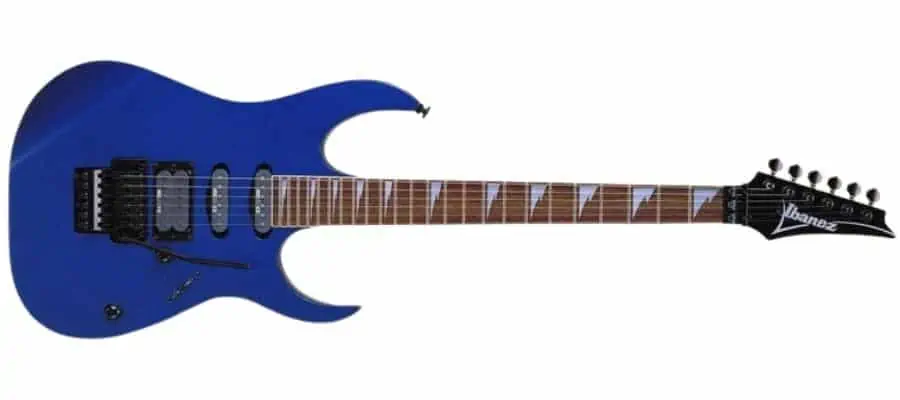

One of the first guitars John Frusciante used was an Ibanez RG760, which had two single-coil pickups, a humbucker in the bridge position, and The Edge tremolo system. It was all covered with stickers with a distinct look. John used the guitar mainly in his first gigs with the band.
Ibanez RG750
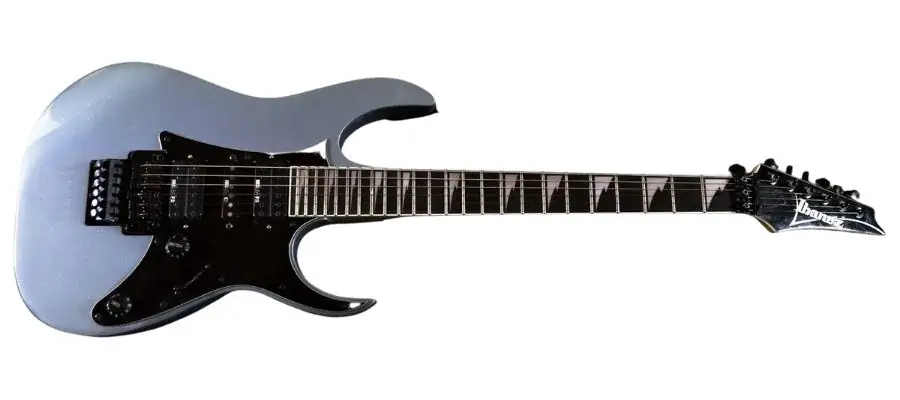

Ibanez RG750 was John’s backup guitar which mainly sat behind the RG760. He used it in a few gigs before, switching to the Stratocaster. The guitar was customized with DiMarzio humbuckers in the neck and the bridge position and a single-coil in the middle.
1968 Fender Stratocaster
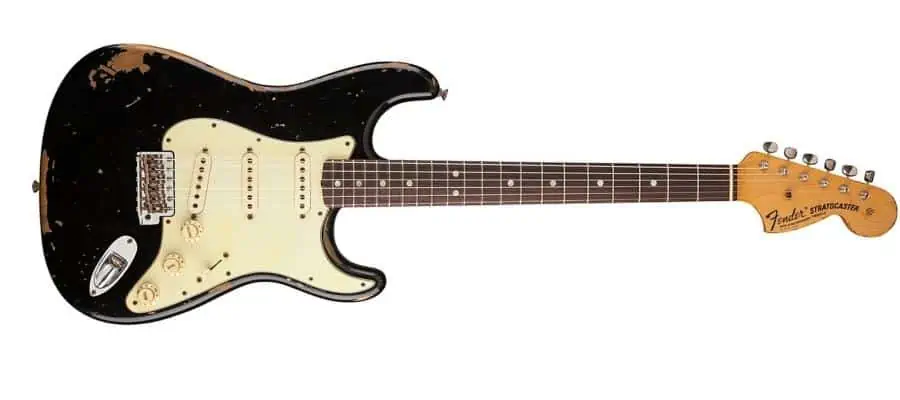

During the Mother’s Milk album era, John’s main guitar was a 1968 Fender Stratocaster. The guitar had a sunburst finish and three single-coil pickups. John used the guitar and liked it a lot which helped him to make the decision that Strats would be his first choice of guitar for the rest of his career.
1970s Les Paul Custom
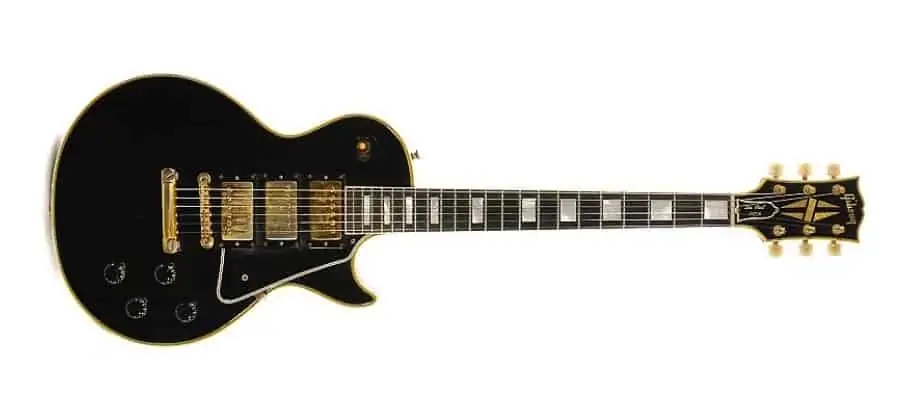

In the 1970s, Les Paul Custom was one of the guitars John experimented with after his Fender Stratocaster was stolen. In his interview with Guitar Player in 1990, he admits that he mainly used Stratocasters and this Les Paul for the recordings of Higher Ground, Good Time Boys, and Knock Me Down. The guitar also can be seen in a few live performances in 1990.
The guitar had a black finish and a wide-body binding, which is typical of the models made after 1975.
1966 Fender Jaguar
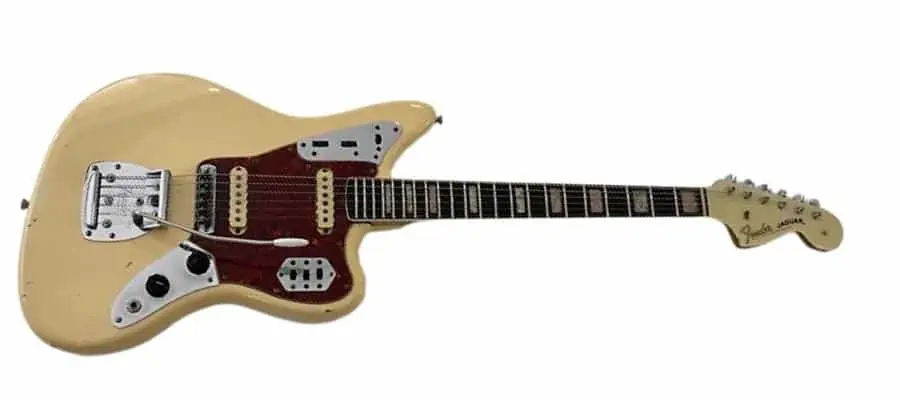

The 1966 Fender Jaguar is one of the favorite guitars of John Frusciante, as he tells in the Guitar Player interview in 1991. He used the guitar for the recording of Power of Equality but did not use it in live performances. He was really attached to this guitar and used it for his own practices and composing processes.
The guitar had a green color with a rosewood neck, two single-coil pickups with white binding and dot inlays, and a floating tremolo. The guitar had many defects like dead spots on the neck, which may be the reason why John never used it in gigs.
Fender Stratocaster Fretless 1957
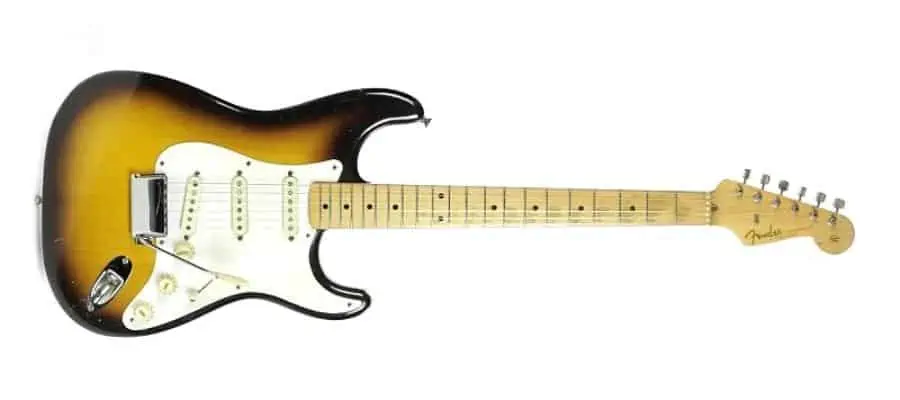
According to an interview, just before the Blood Sugar Sex Magik album, John purchased another Fender Stratocaster, most probably a 1957 model. However, he did not like the frets, so he got them removed. He used the guitar for recording the solo on Mellowship Slinky in B Major.
1990s Gibson Les Paul Goldtop
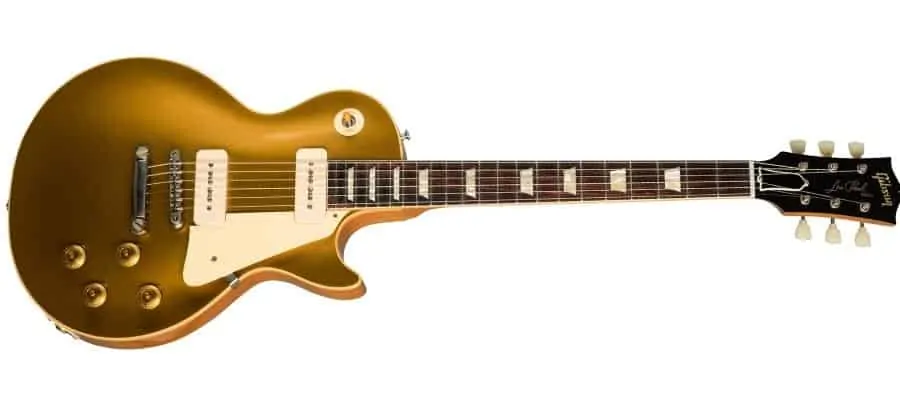

In 1991, John Frusciante and Flea had a side project called HATE (Hops, Anarchy, Truth For Everyone). Mainly for this band and occasionally for the Blood Sugar Sex Magik recordings, John used a 1990s Gibson Les Paul Goldtop for a short time.
1950’s Fender Stratocaster
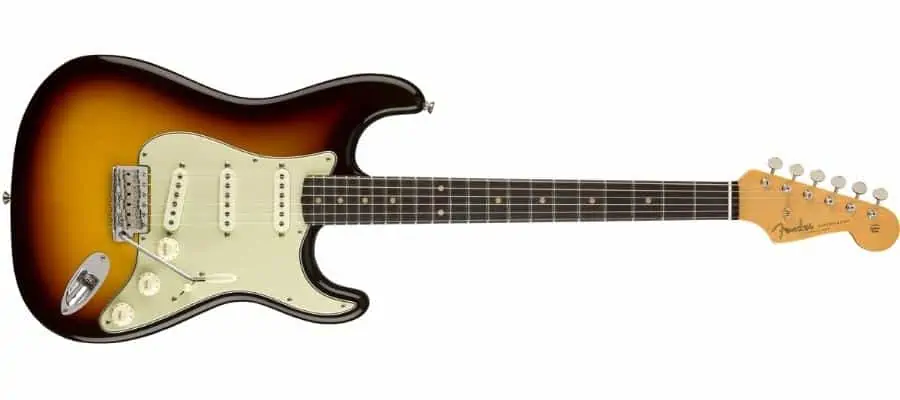

For the recording of the BSSM album and the world tour after it, John’s main guitar was a 1950’s Fender Stratocaster. In an interview, John says it was a 1958 Strat, but that does not seem to be true, as the guitar had a rosewood neck. The first Strats with rosewood necks were produced in 1959.
The guitar can be seen in almost all the shows in 1991 and can be heard all over the BSSM album. It also often appears in the Funky Monks documentary, which tells the story of the BSSM album.
1964 Fender Jaguar
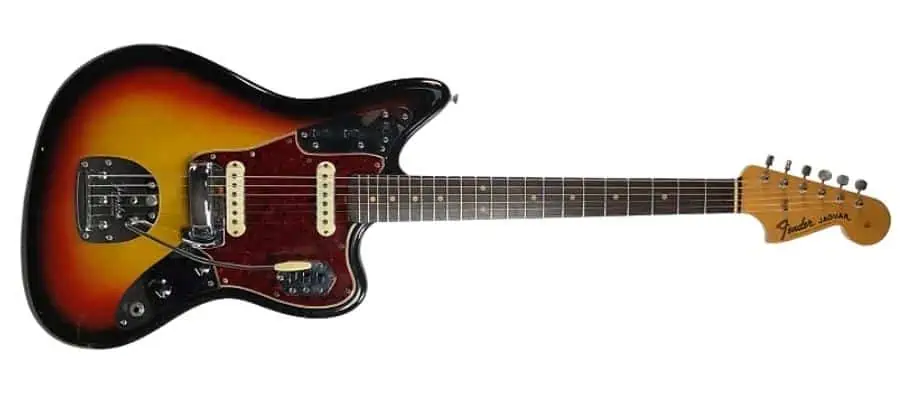

During the Nuttstalk tour of John’s solo career, in mid-1997, John was playing a 1964 Fender Jaguar. The guitar had a sunburst finish, and John did not use the guitar again after the tour.
1962 Fender Jaguar
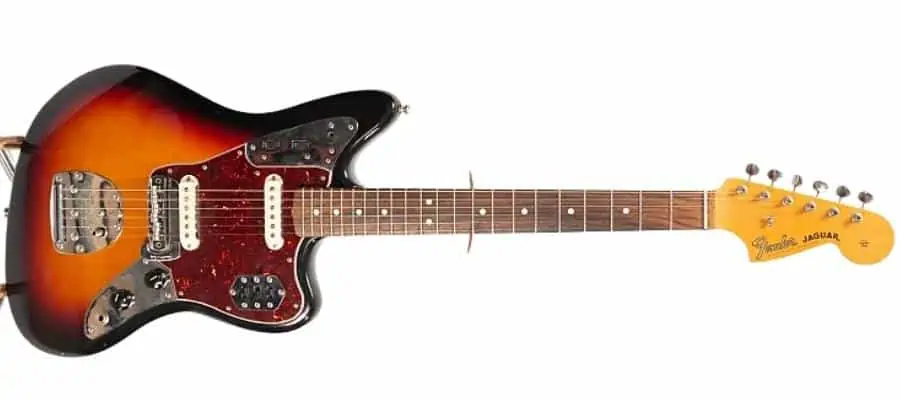

The reason he left his 1964 Jaguar was that the same year he bought himself a 1962 Fender Jaguar with a red finish. From 1994 to around 1997, most of John’s previous guitars were damaged in the fire in his house, and he sold the rest as he needed money for drugs.
The only guitar he had when he rejoined the RHCP in 1998 was the 1962 red Fender Jaguar. He used the guitar for a few shows before he rejoined the RHCP, as well as for his long practice sessions to get his technique and groove back after a long period of drug addiction.
1962 Fender Stratocaster
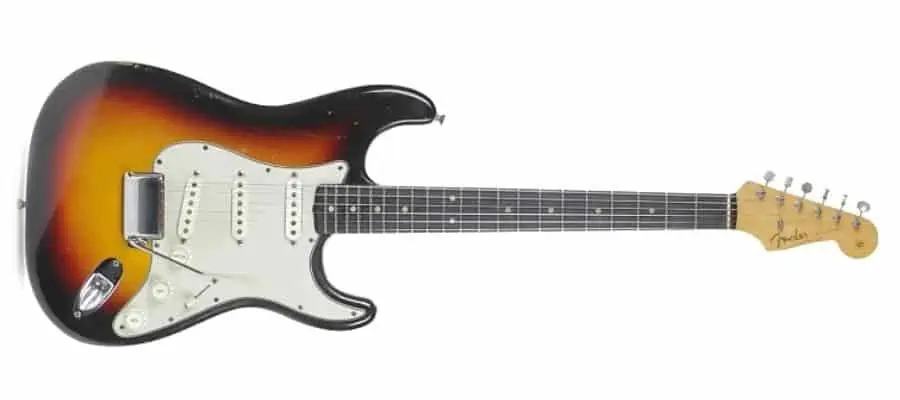

John Frusciante’s main guitar was settled in 1998 when Anthony Kiedis bought him the 1962 Fender Stratocaster. He has used and still uses this guitar in recordings as well as in gigs. It is without a doubt the guitar that is most associated with John Frusciante.
It is one of the first rosewood guitars that Fender made. It had a thicker slab fretboard with a flatter 7.25” radius than today’s Strats with a 9.5” radius, 3-tone sunburst finish, and original Fender pickups and parts.
For almost all iconic RHCP recordings, with a few exceptions, John used Fender Stratocaster variations. It can be seen and heard in many gigs and songs, especially in the By The Way album.
1954 Fender Stratocaster
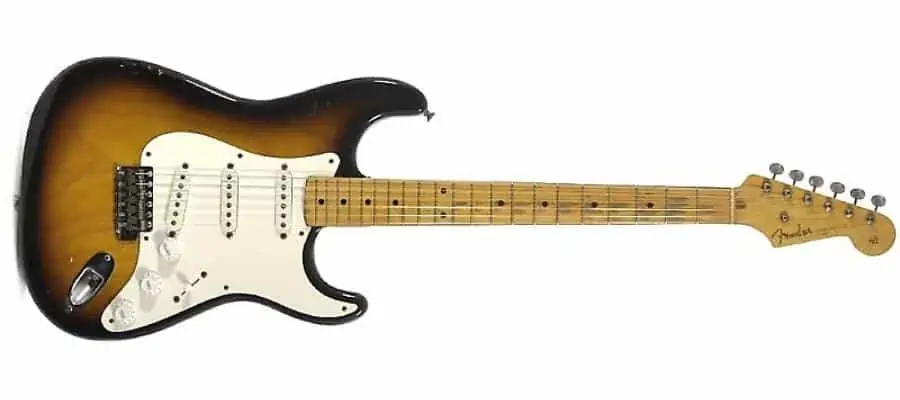

Another one of John’s favorite guitars was a 1954 Fender Stratocaster which he bought in 1999. He used this guitar mainly in the Californication album and for mellow tunes on later albums like Dani California and Zephyr Song. The guitar had a two-tone sunburst finish and a one-piece maple neck. It is the only maple neck Strat John ever used.
The guitar had Seymour Duncan SSL-1 pickups back then, but in recent years John switched them with custom-wound pickups made by Paul Waller of the Fender Custom Shop.
1960 Fender Telecaster Custom
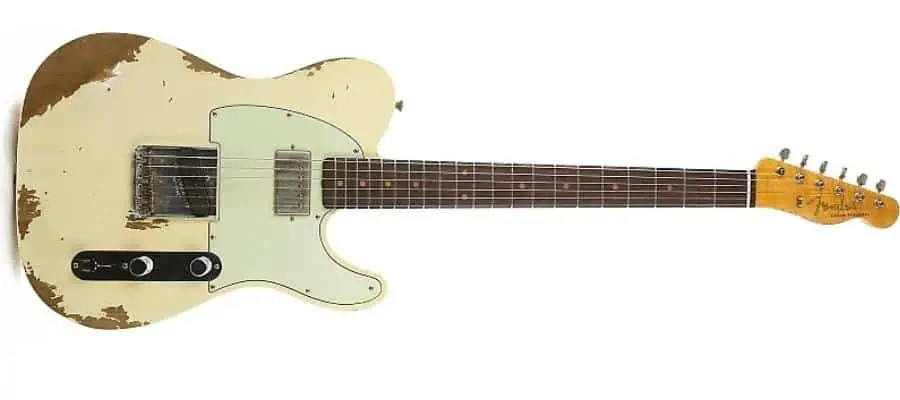
In an interview in 1999, John Frusciante says that he used a 1960 Fender Telecaster Custom, which he bought just before the Californication album, for some songs like Easily and Scar Tissue. He used the guitar in the solo sections. Also, he used the same guitar for the recordings of one of the most iconic RHCP tunes, Can’t Stop.
His Tele had a three-tone sunburst finish, rosewood fingerboard, and a white pickguard with an F letter sticker with standard Tele pickups. It is one of his favorite guitars.
1957 Gretsch White Falcon


1957 Gretsch White Falcon was John’s choice for many songs such as Otherside, Californication, and for a few sections on This Velvet Glove. He used the guitar with heavy gauge strings; D’Addario EXL145 set 0.12 set.
1961 Gibson SG
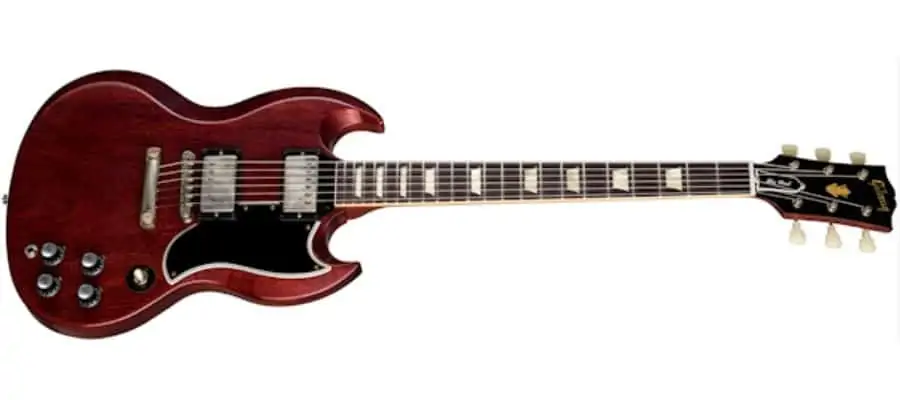

For the song Fortune Faded and breakdown sections of Otherside, John used a 1961 Gibson SG. The guitar’s heavy tone is apparent in both songs. It had a red finish on a solid mahogany body, three PAF pickups, along with a a sideways Vibrola tremolo. It is one of the first Gibson SGs ever made; that is why actually it was called a Les Paul custom, as the name of the model line changed to SG a few years later.
1956 Gibson ES-175D
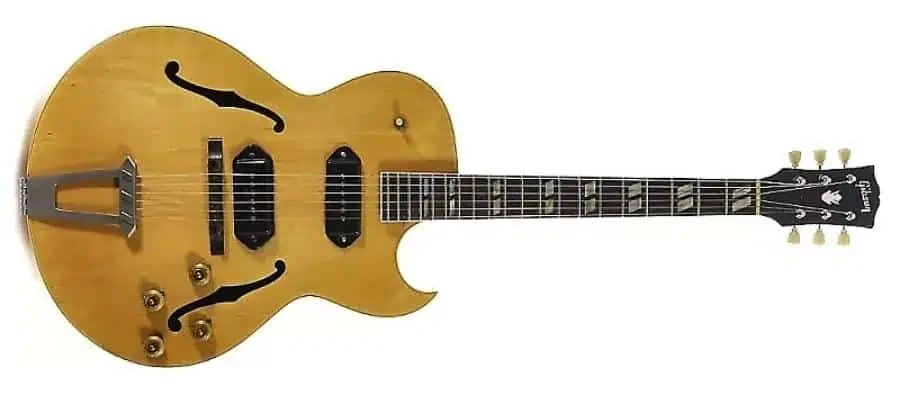
According to this interview, for Get on Top, and the entirety of Porcelain, John used a semi-acoustic guitar, a 1956 Gibson ES-175D. It had a dark sunburst finish, two PAF pickups, and a full-depth hollow body. The guitar is probably a 1957 or later model as it has PAF pickups.
1963 Fender Stratocaster
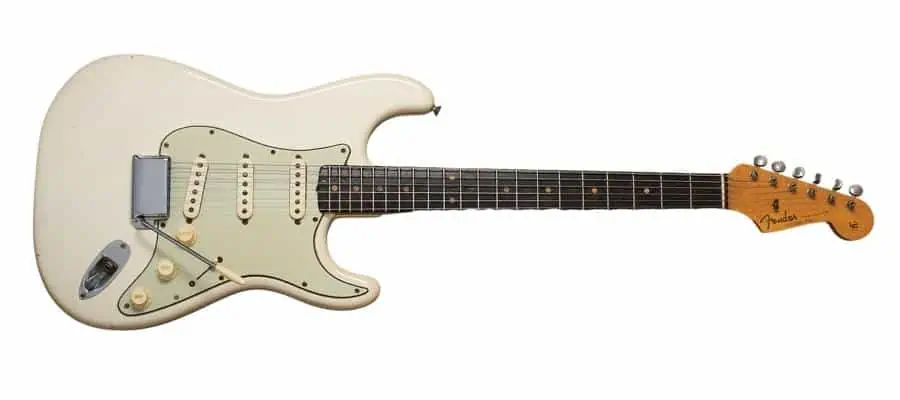

As the backup of his favorite guitar, the 1962 Fender Stratocaster, John had a 1963 Fender Stratocaster with a white finish. He used it in some gigs like the Rock In Rio concert in 2001.
1999 Fender Silver Sparkle Stratocaster
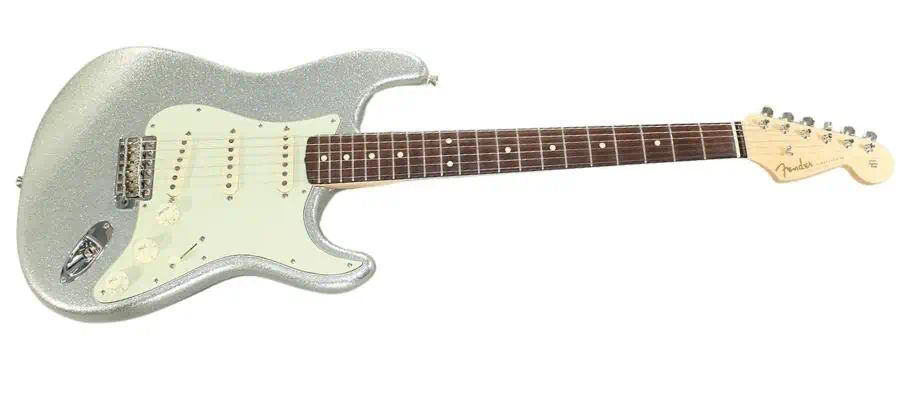

Although the guitar does not belong to him, John Frusciante appears with a 1999 Fender Silver Sparkle Stratocaster in the video clip of Can’t Stop. The guitar was given to him by the production company, as they thought the guitar’s looks went well with the video clip.
Fender Toronado Deluxe
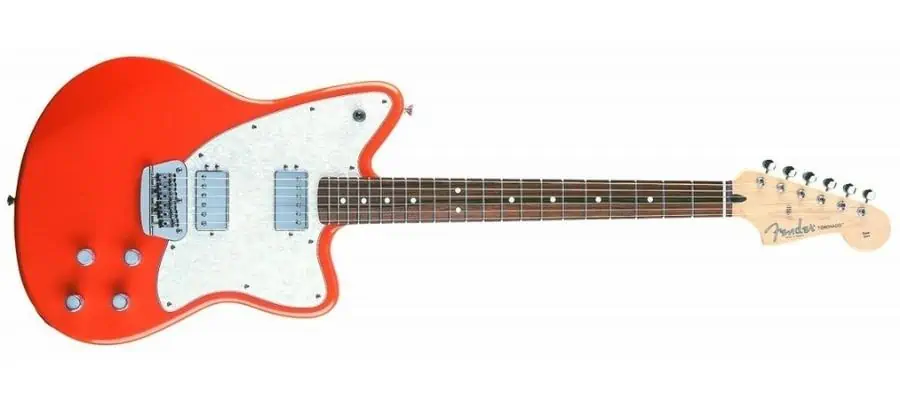

Just like the 1999 Fender Silver Sparkle Stratocaster, the Fender Toronado Deluxe with the orange finish was rented by the production company for the Can’t Stop video clip.
1965 Fender Duo-Sonic
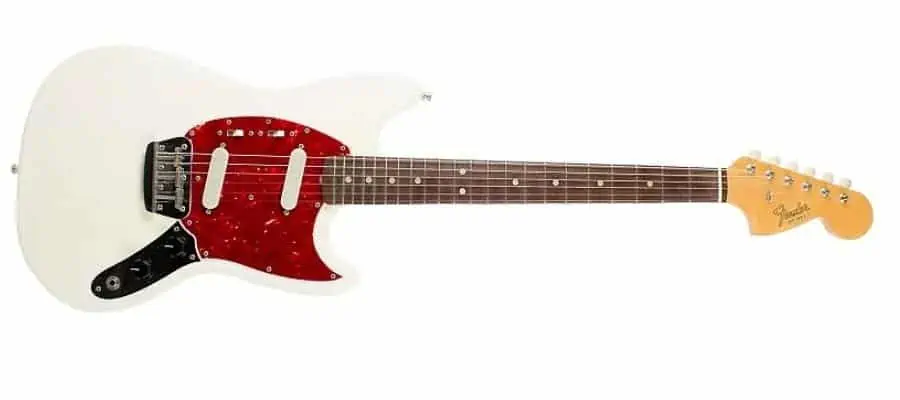
According to an interview that JFEffects did with Dave Lee, John Frusciante used a 1965 Fender Duo-Sonic when he was composing Under the Bridge.
1961 Fender Stratocaster
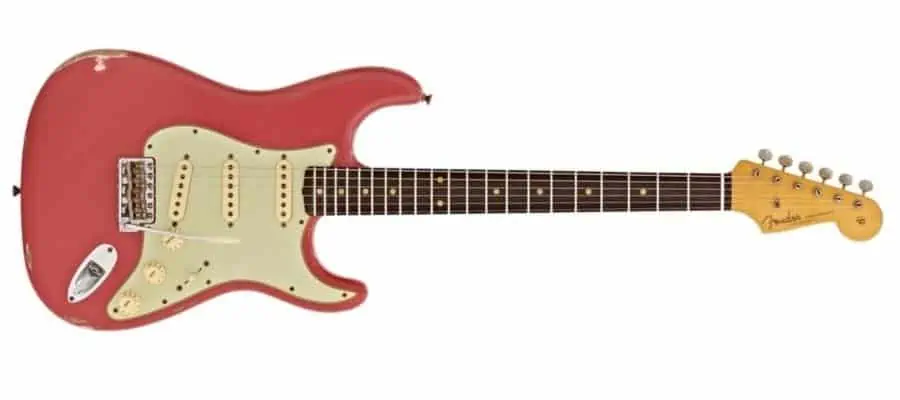

Another backup guitar for John’s 1962 Strat was a 1961 Fender Stratocaster with a red finish. He used it occasionally in some gigs after the Stadium Arcadium album. The guitar can be most notably seen in the Live Earth concert in 2007. He had two of these guitars with red and white finishes.
1969 Gibson Les Paul Custom
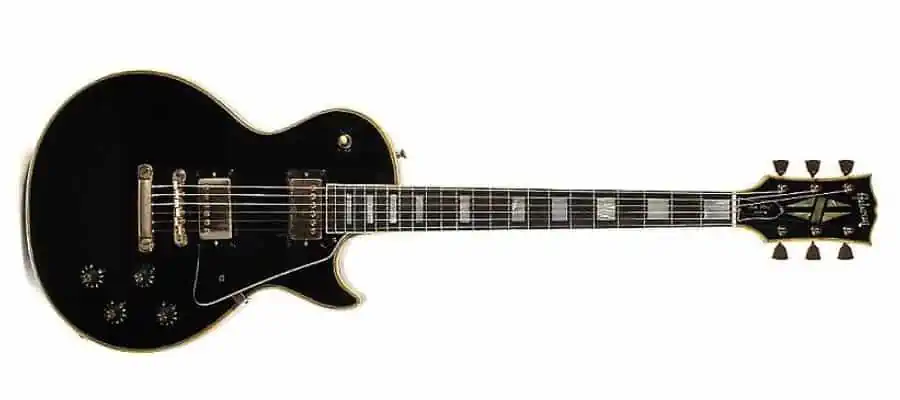

John used a 1969 Gibson Les Paul Custom, which he bought just before the Stadium Arcadium album, for recordings of Readymade and some overdubs on Make You Feel Better. He sometimes uses the guitar in live performances, too.
1960s Bartell St. George XK12
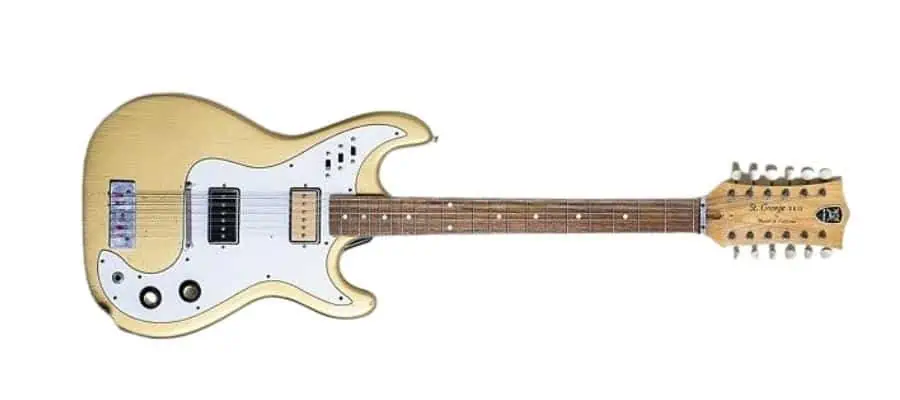
In an interview with Guitarist & Bass (FR) in March 2009, John says he used a 1960s Bartell St. George XK12 for The Empyrean album. It is one of the lesser-known guitars of John, which is only apparent in some photos from his house and studio.
1960s Fender Jaguar


For the Californication sessions in 1999 to record Around the World, John used a 1960s Fender Jaguar. He played the guitar in some live performances in that era, too. In around 2009, he switched the guitar with a Rolan synth.
1960s Rickenbacker 365 Deluxe
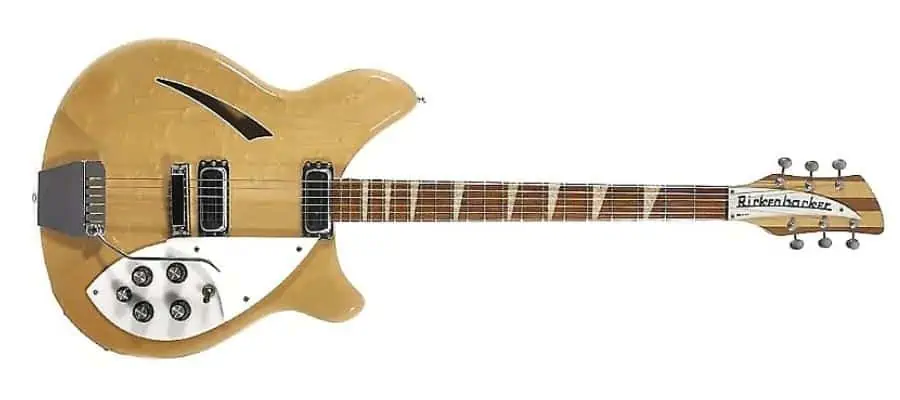

One of the guitars in John’s guitar collection is a 1960s Rickenbacker 365 Deluxe, which can be seen in the video clip of Dani California. However, he did not use the guitar in any live performance or for any recording.
1980 Yamaha SG2000
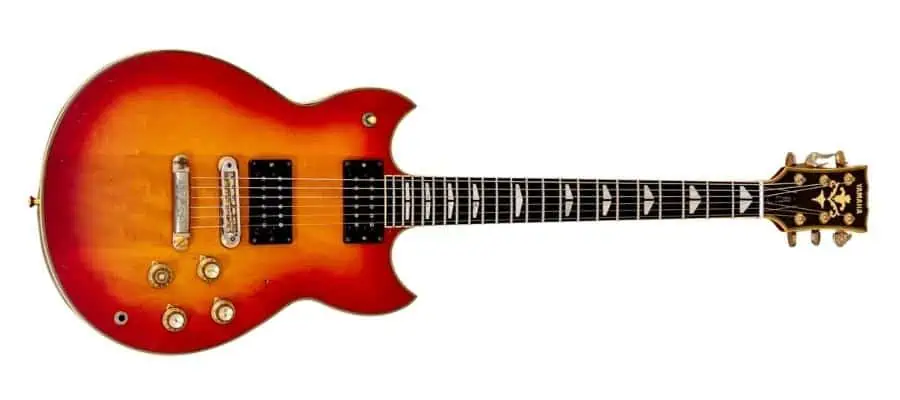
John Frusciante bought a 1980 Yamaha SG2000 in around 2010 and used it in his solo projects such as PBX and Enclosure albums. He talks about the guitar in this interview. In another interview, he says he can get a wide tonal variety out of them, and they’re very heavy guitars thanks to their wood, so they have a very fat sound.
John Frusciante’s Acoustic Guitars
Martin D-18
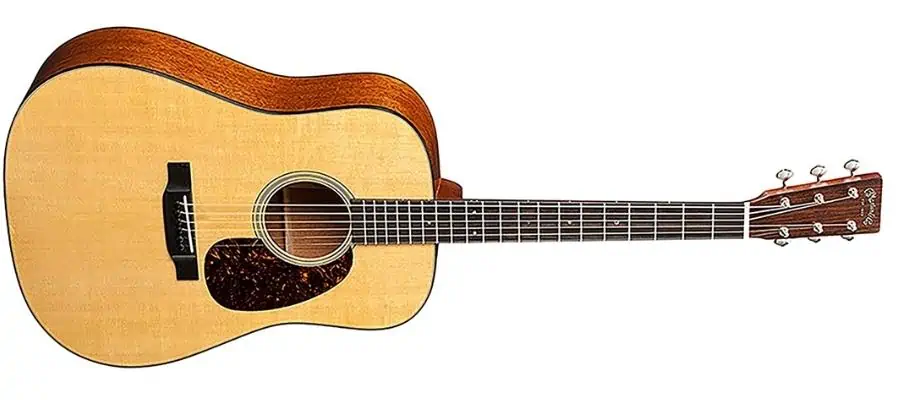

During his first years with RHCP, John used a Martin D-18 as his main acoustic guitar. The instrument can be seen in the Funky Monks documentary and was used for the recording of the song I Could Have Lied.
Martin 12-String
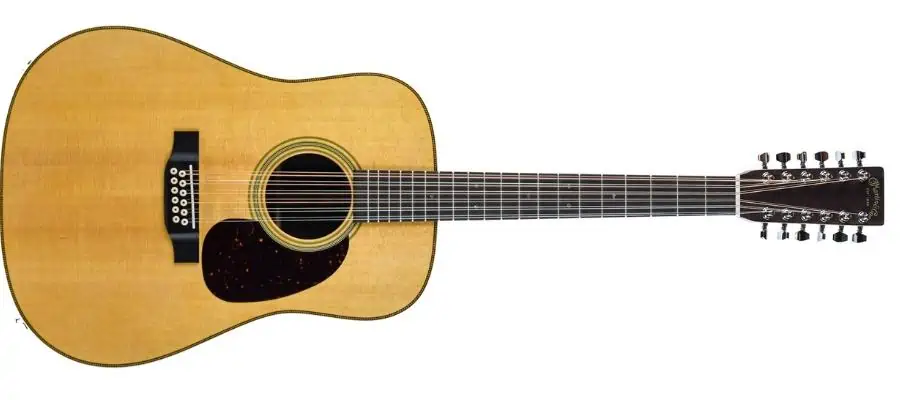

Another acoustic guitar that is visible in the documentary is the Martin 12-String, which John used for Breaking the Girl, from the Peppers’ 1991 album, Blood Sugar Sex Magik.
Martin D-28
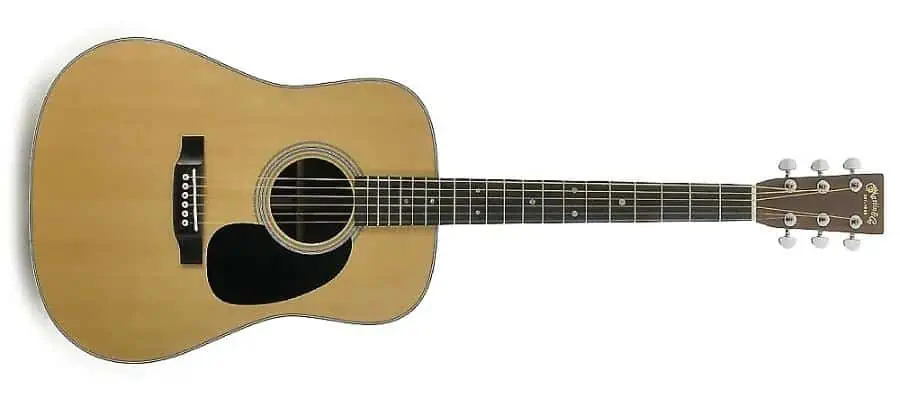

John can be seen playing a Martin D-28 in an interview for Dutch television filmed in September 1991. The guitar was also visible in John’s room in the Funky Monks documentary, so it would be fair to guess it was used in the studio sessions of Blood Sugar Sex Magik.
Gibson L-0 Robert Johnson
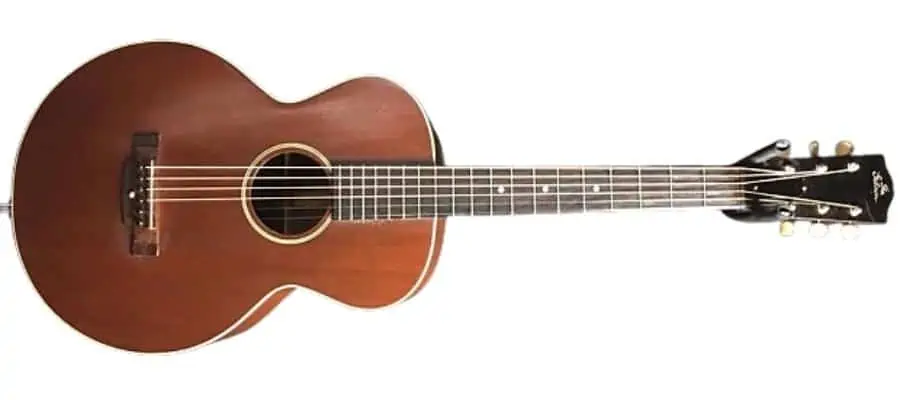

John Frusciante used a Gibson L-0 Robert Johnson during his solo career between 1992 and 1998. The guitar can be seen only in one live gig, which is the Hollywood Moguls concert in 1997.
1940s/50s Martin 0-15
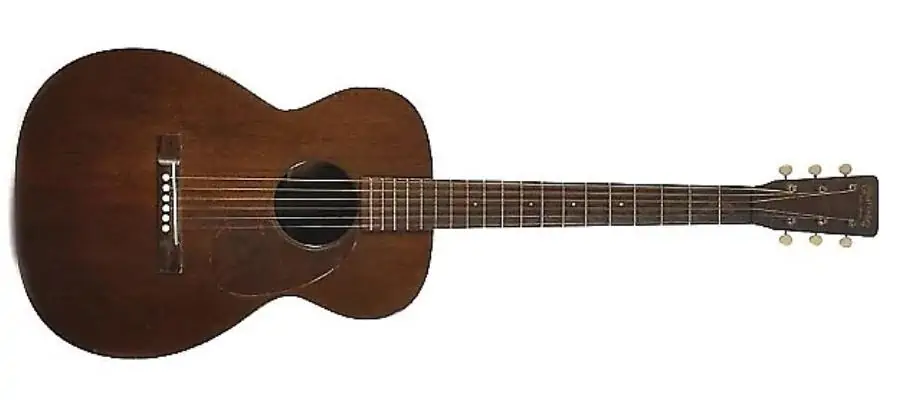
According to his interview with Guitar One in 2001, John used the 1940s/50s Martin 0-15 for working on the Californication album while he was recovering from his drug addiction in order to get his groove back.
Maton CW80C
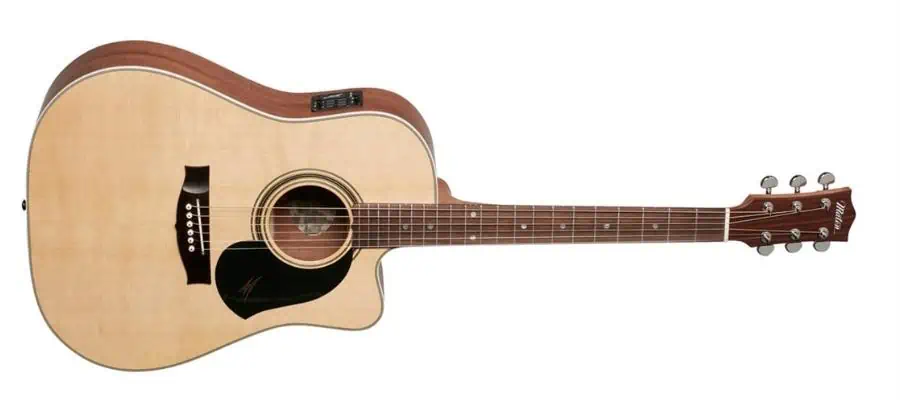

For live gigs, John was using a Maton CW80C since the Californication album. It can be seen in many concerts.
Martin 0-15 #2
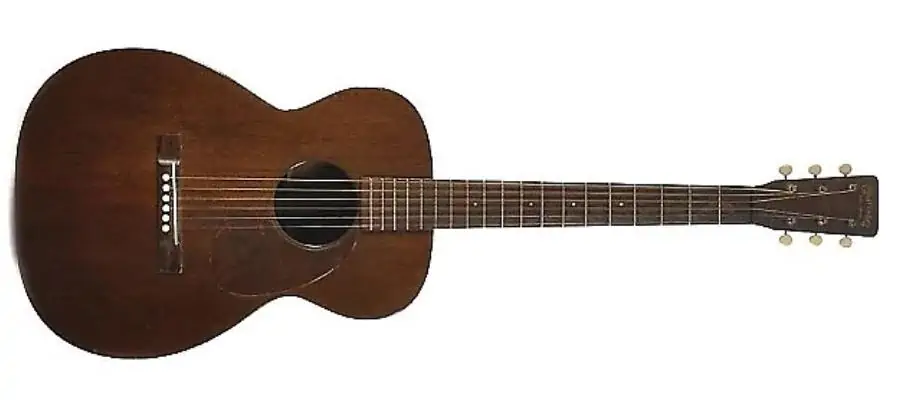
In the early 2000’s John bought another Martin 0-15, which he equipped with a pickup and used as his main acoustic guitar for live performances. John talks about the guitar in this interview, and he says the pickups system he used was Trance Audio “Amulet” Stereo.
Taylor 314ce
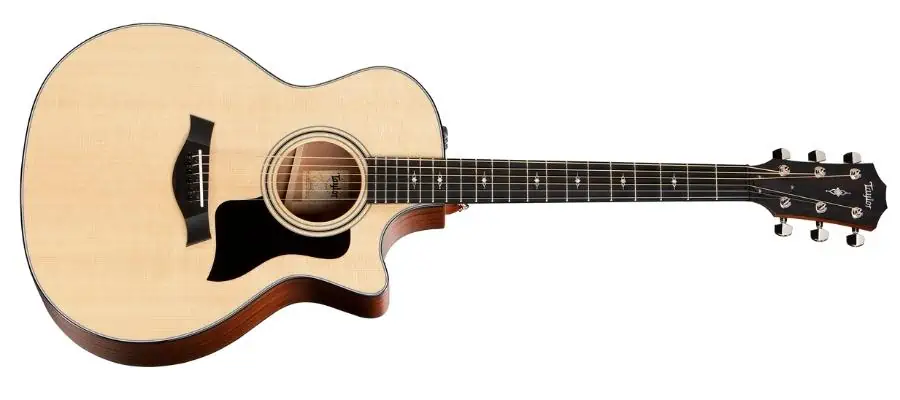

In almost all of the By The Way album, John used Taylor guitars for the recording sessions. He almost never appeared with Taylor guitars in live gigs, except the Jonathan Ross Show in 2002, where he played a Taylor 314ce.
Martin D12-35
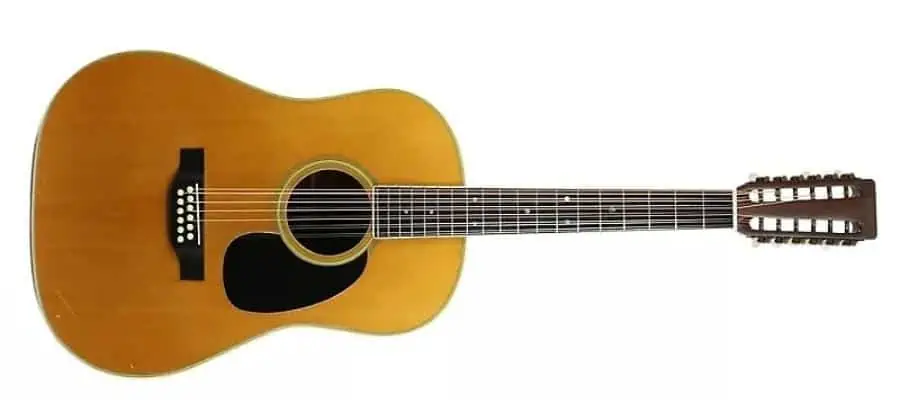
For his 2005 solo album, Ascension, John preferred a Martin D12-35 acoustic guitar. He talks about the guitar in this interview with Guitar World magazine and says he really likes this 12-string guitar.
John Frusciante’s Guitar Strings
D’Addario Bronze Acoustic Guitar Strings
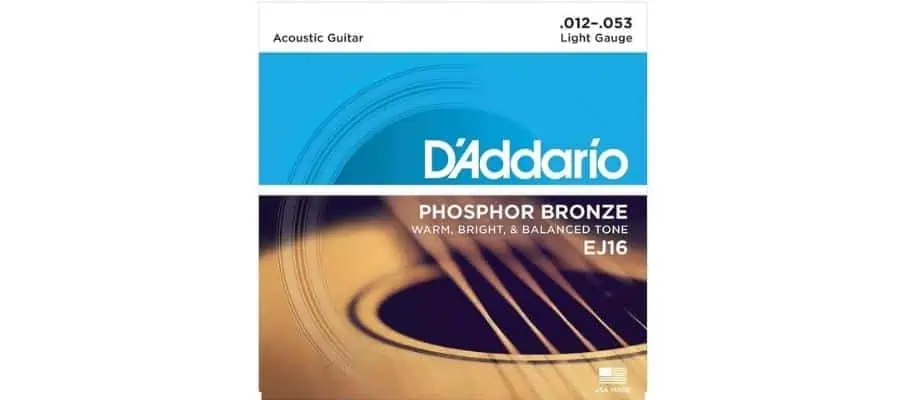
John’s choice of acoustic guitar strings is D’Addario Bronze Acoustic Guitar Strings which had .012, .016 unwound, and .024, .032, .042, .053 wound strings.
D’Addario EXL110 Electric Guitar Strings
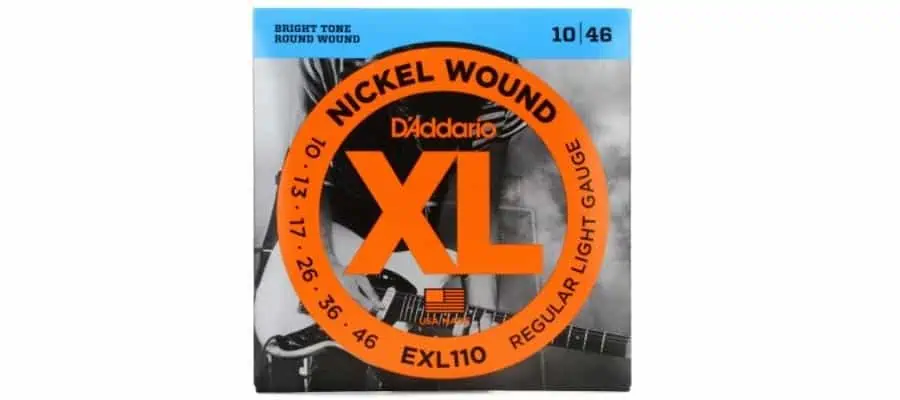
On all of his Stratocasters, John prefers the D’Addario EXL110 strings wth .010-.046 gauges. Sometimes he also goes with a 0.11 string on his high E.
John Frusciante’s Amps
Carvin X-100B/X-60B
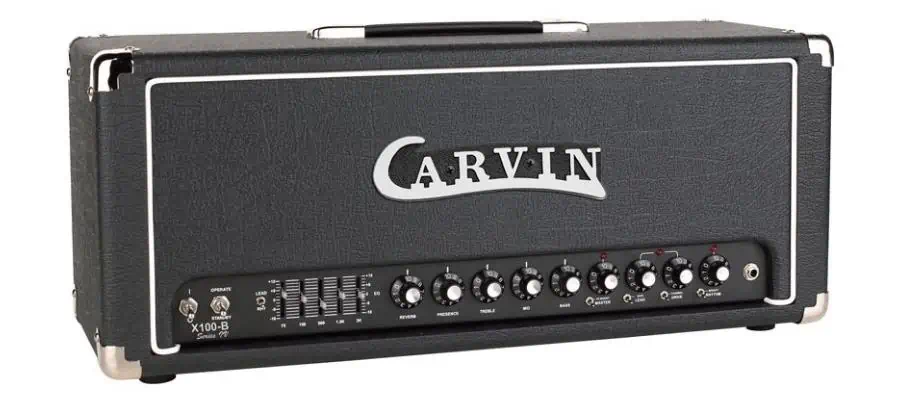
During his first few years with the Red Hot Chili Peppers, John Frusciante was using either a Carvin x-100b or an X-60B head combined with a pair of 4×12 Carvin cabinets.
Soldano SLO100
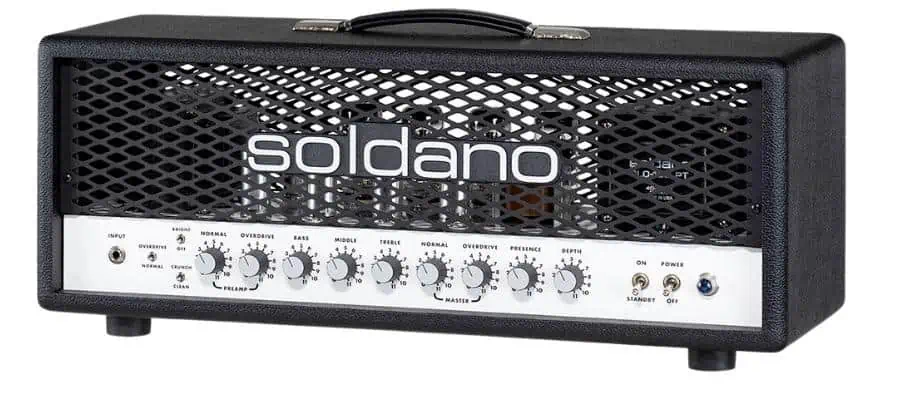
For the studio sessions of the Mother’s Milk album, John used a Soldano SLO100 amp. But, he was not using the amp for live performances.
Mesa Boogie Strategy 400 Stereo Power Amp
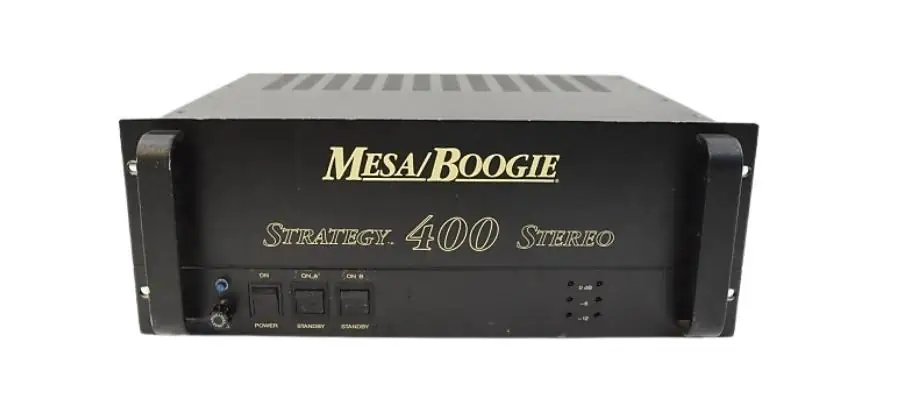
Seen on the Psychedelic Sexfunk-Live From Heaven footage, John Frusciante was using Mesa Boogie Strategy 400 Stereo Power Amp combined with a Mesa Boogie Quad Preamp in the early years of his career around 1989.
Marshall JCM800
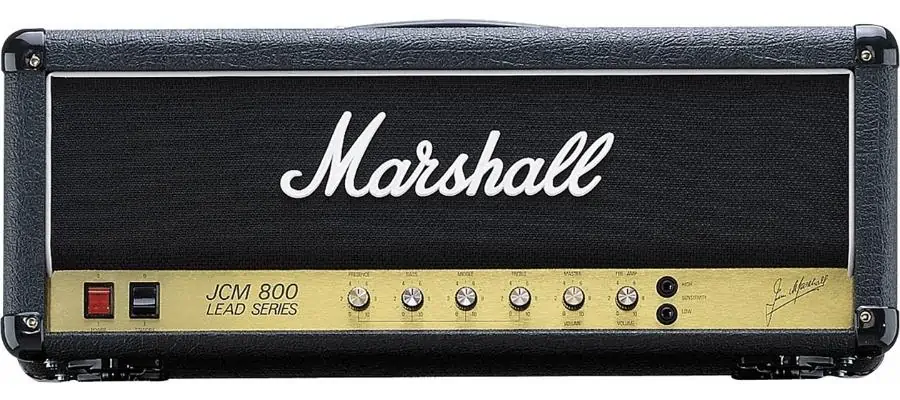
For the Mother’s Milk tour, John was mainly using Marshall JCM800 amp heads with double Marshall 4×10 speaker cabinets. He used the amp often in live gigs as well as for the studio sessions of the BSSM album.
Fender H.O.T. Combo Amp
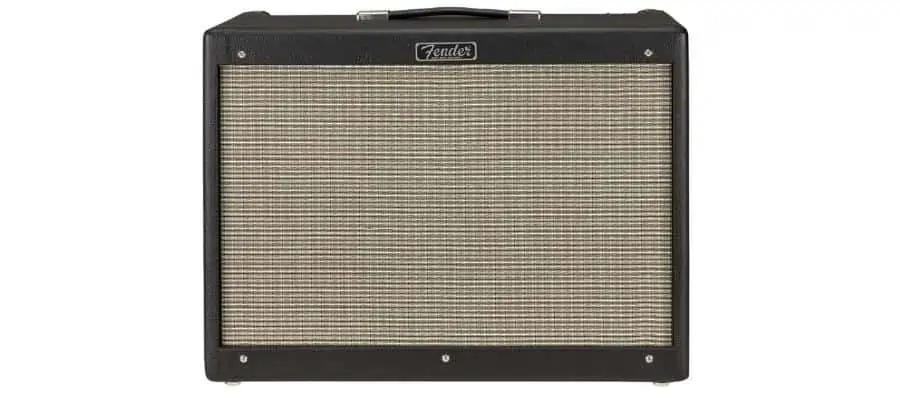
For some overdubs on the Blood Sugar Sex Magik album, John used this small practice combo amp in early 1991.
Marshall Bass Head
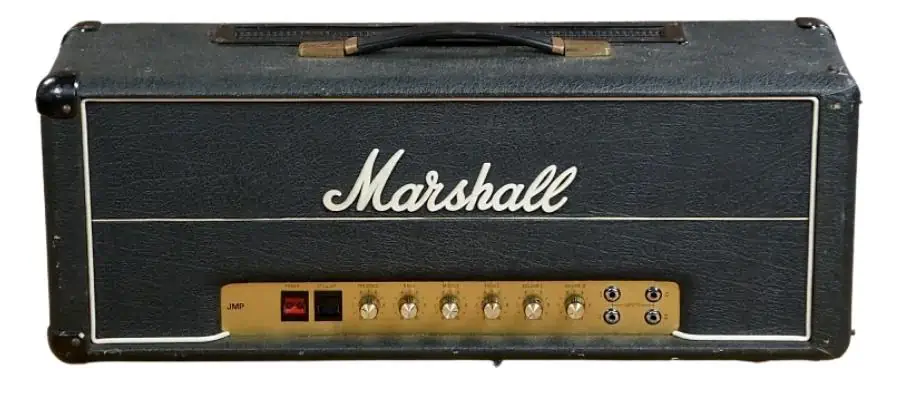
For the BSSM album, John used at least four different versions of Marshall Bass Heads. He continued using these amps occasionally in live performances and some other record sessions.
1965 Marshall JTM-45
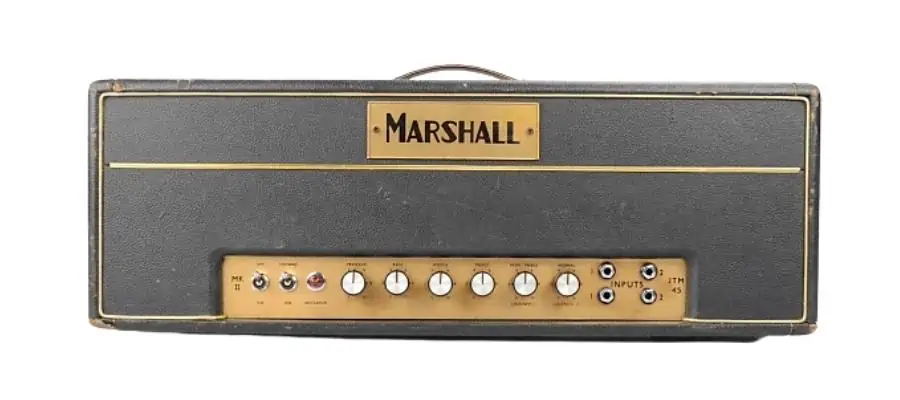
John’s main amp during the Californication album was a 1965 Marshall JTM-45, often paired with a Marshall Super Bass. However, he never used the amp in live performances, as he preferred 200W Marshall Leads for the gigs.
Marshall Silver Jubilee 2555
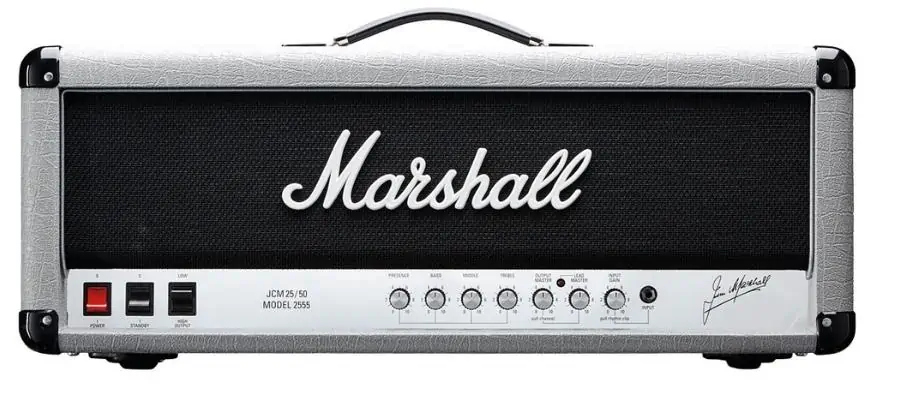
Marshall Silver Jubilee 2555 was first used by John during the Californication album studio sessions. He liked the amp so much that it quickly became a part of his main stage setup. He was often pairing it with a Marshall Major amp, and sometimes he was just using two Marshall Silver Jubilees at the same time. The second Jubilee was responsible for the overdrive tones.
Vox AC30
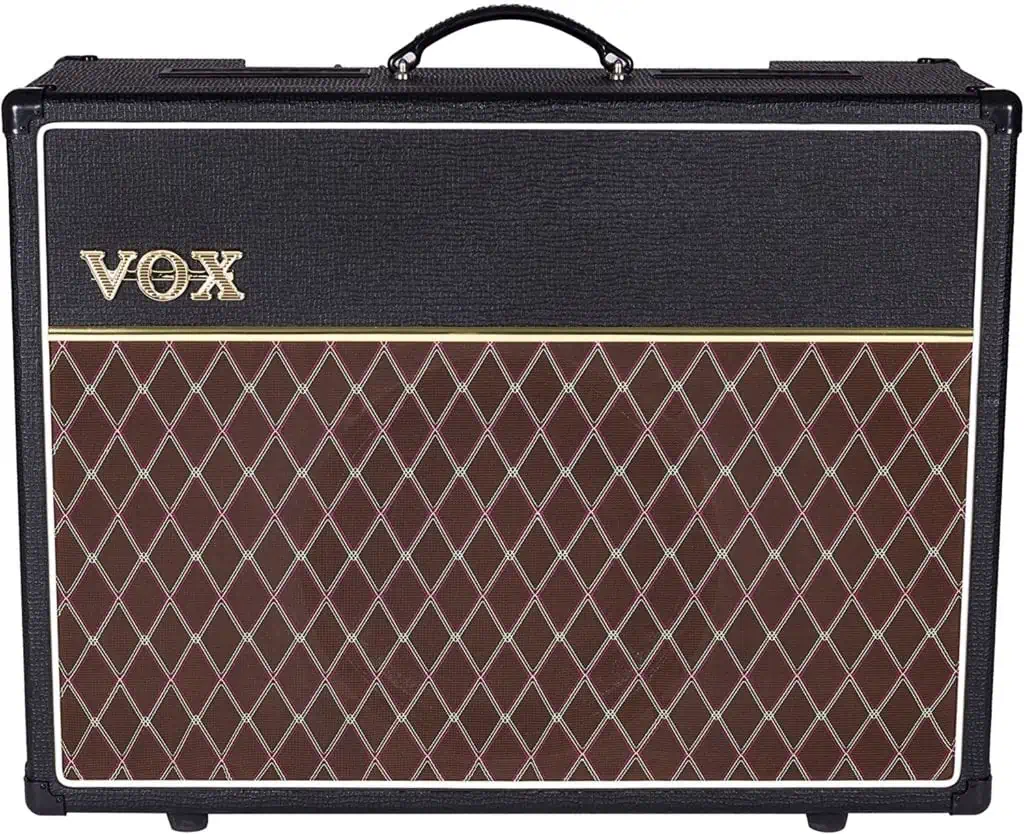
John used a Vox AC30 Porcelain from the 1999 album Californication. Although not often, he used the amp on the stage, too, which can be seen in the gigs of Ataxia in 2004.
Fender Blackface Showman
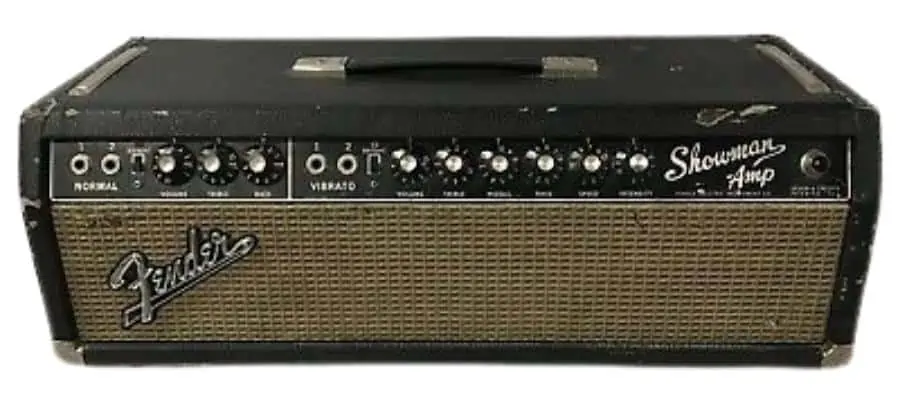
John’s main amp for clean sounds in the studio since Californication was a Fender Blackface Showman, with which he recorded many great songs like Scar Tissue and Otherside. But, for the gigs, he preferred a Silverface, Dual Showman.
Marshall Major 200W 1967
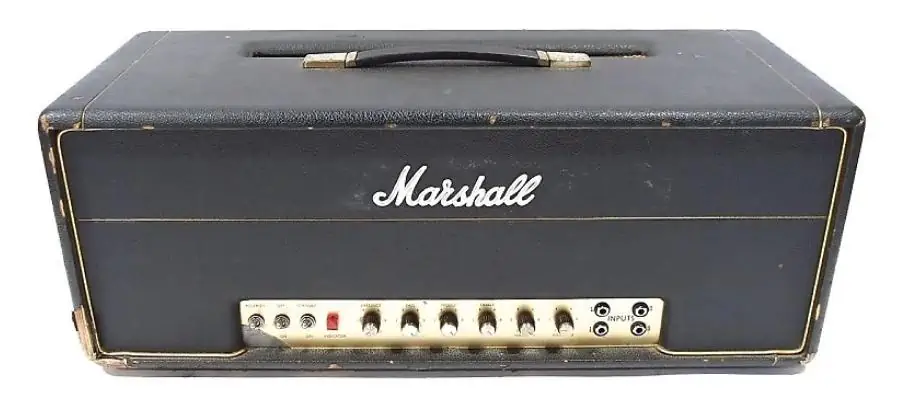
In the studio session and tours of the By the Way and Stadium Arcadium albums, John’s main amp of choice was a Marshall Major 200W (Model 1967.) Before that, he also used the amp partly in the Californication tour, with a Marshall Silver Jubilee and a Fender Dual Showman.
Fender Silverface Dual Showman (Head)
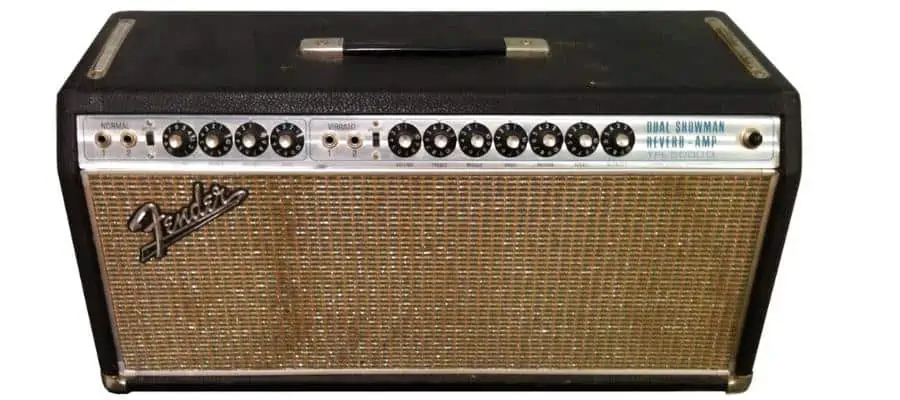
For the entirety of the Californication tour, John preferred to play with a Fender Silverface Dual Showman Head, which he used along with a Marshall Silver Jubilee and a Major Major 200W.
John Frusciante’s Cabinets
Marshall 1960B 4×12” Cabinet
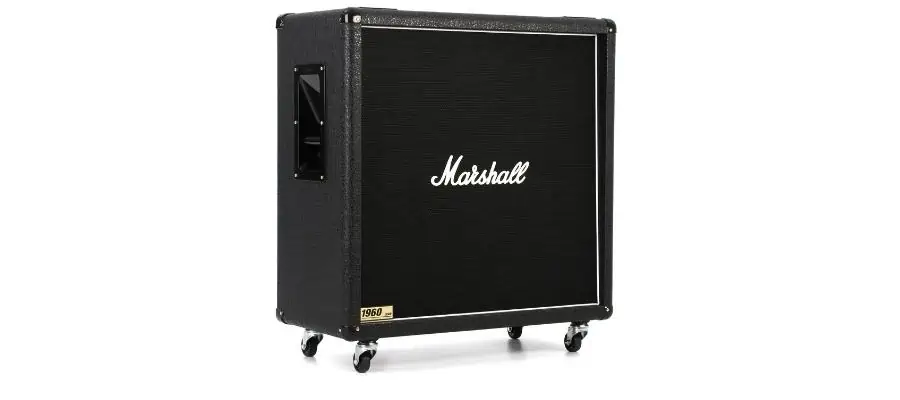
When John was using Marshall amps, which is most of the time actually, he pairs the amps with Marshall 1960B 4×12” Cabinets.
Carvin X-100B
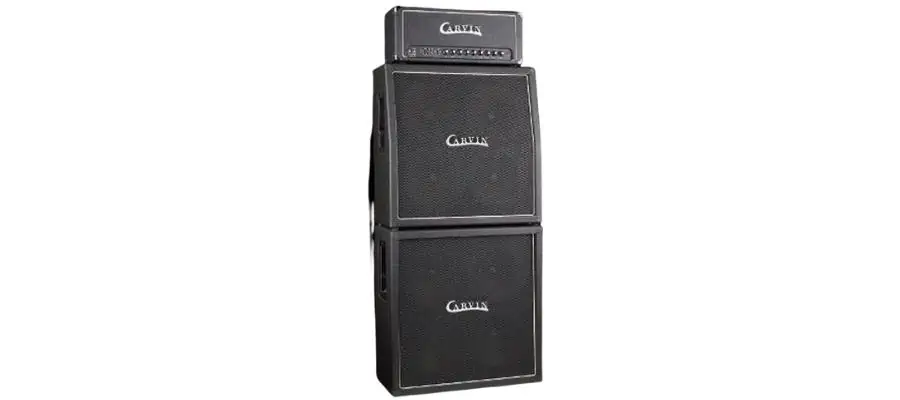
John preferred Carvin X-100B cabs which he combined with Carvin X-100B/X-60B amp heads.
Marshall JCM 900A Lead 4×12″ 300-Watt Angled Extension Cabinet
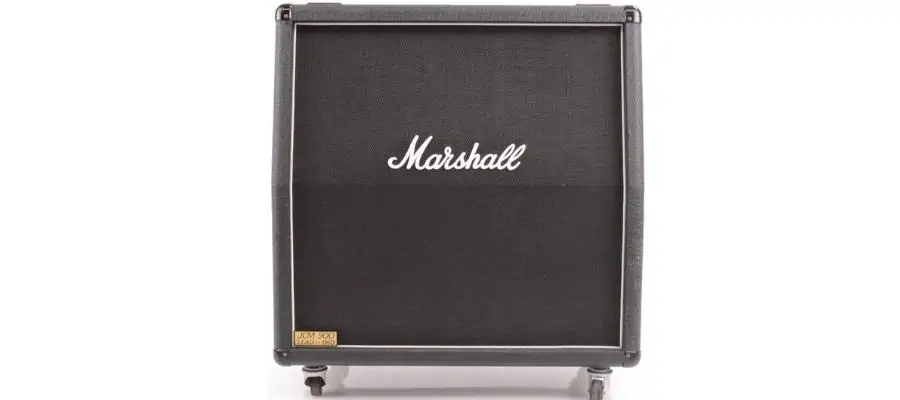
Marshall JCM800 is one of the most-used amps by John Frusciante. He combines the amp with Marshall JCM 900A Lead 4×12″ 300-Watt Angled Extension Cabinets.
John Frusciante’s Pedals
Ibanez WH-10 V1 Wah

John’s main choice of wah-pedal is Ibanez WH-10 V1 Wah which he has been using since he joined the band in the late 80s. He prefers this wah pedal instead of more popular models like Dunlop CryBaby, as this one has a wider frequency range.
Boss CE-1 Chorus Ensemble
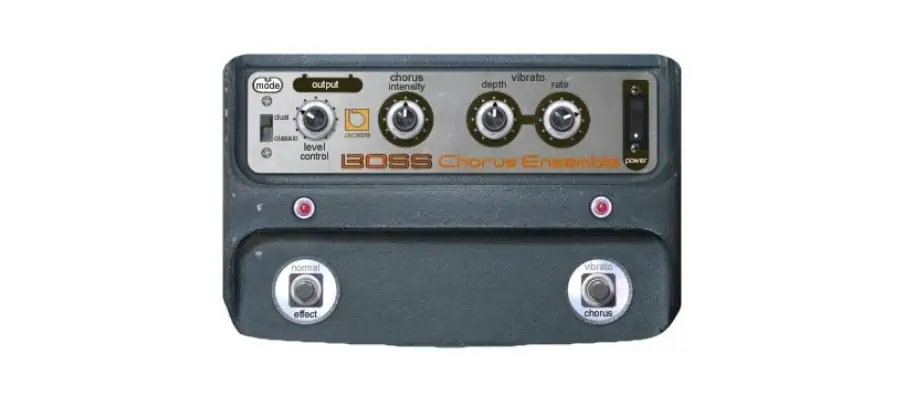
John Frusciante likes to use chorus effects in his tones very often. His choice of chorus pedal has been the Boss CE-1 Chorus Ensemble since 1990. He used it until 2010 when he left the RHCP. The pedal can be heard in many parts of several songs, like the ending of Under The Bridge.
Dallas/Dunlop Fuzz Face
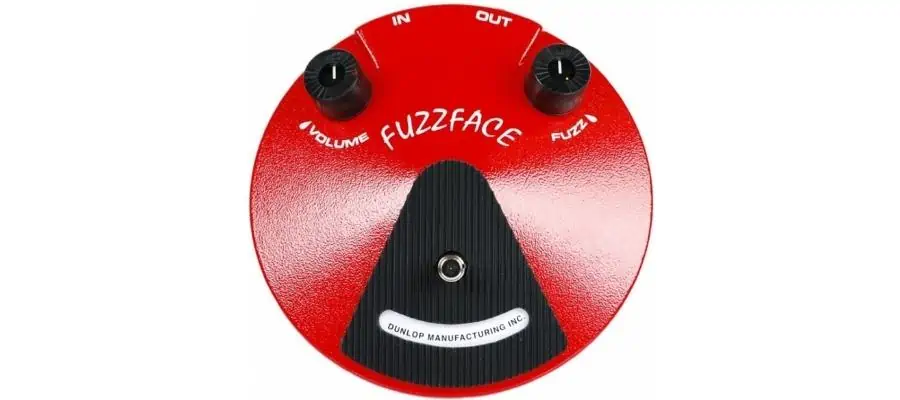
John used the Dallas/Dunlop Fuzz Face pedal during the Blood Sugar Sex Magik studio sessions as well as some shows around 1991. Later he stopped using the pedal as he switched to the Boss Fuzz pedal.
Boss DS-2 Turbo Distortion
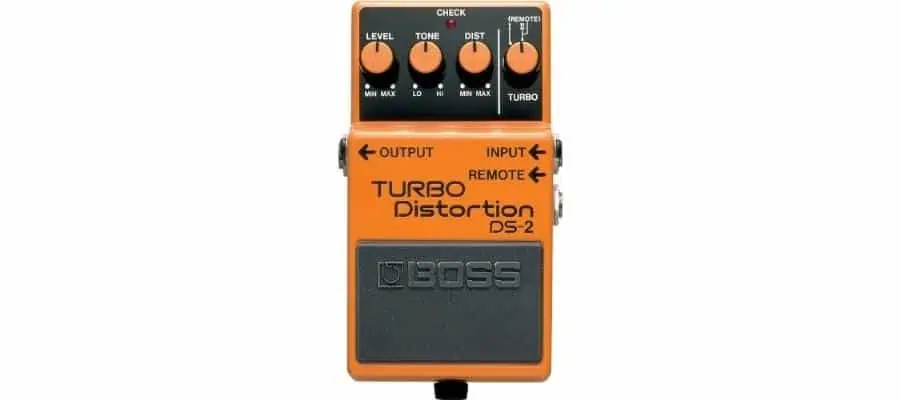
John first started using Boss DS-2 Turbo Distortion pedal in 1991, just whenthe Blood Sugar Sex Magic studio sessions were going on. He liked the pedal so much that it became one of the regular members of his setup. He has been using the pedal extensively since then in the studio as well as on the stage.
MXR Phase 90
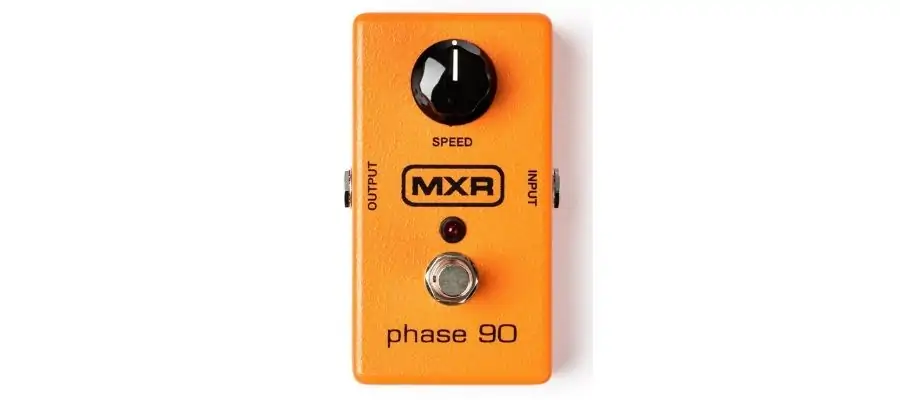
Since the Mother’s Milk and BSSM era John has an MXR Phase 90 in his setup. He uses it often in his live gigs.
DOD Stereo Chorus
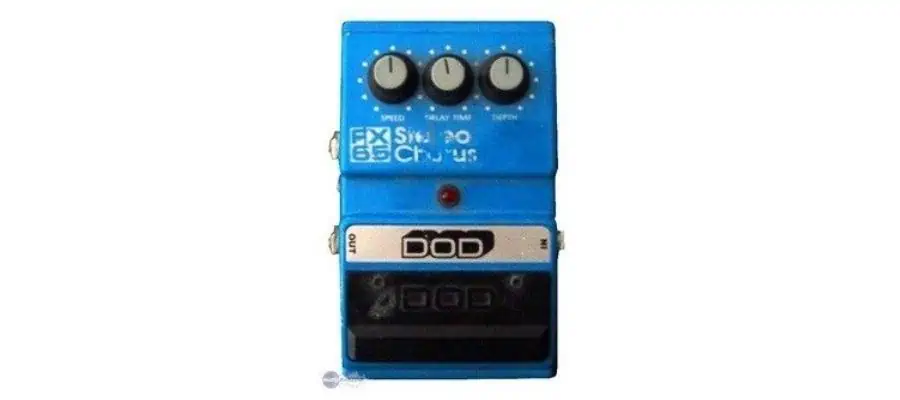
For the BSSM studio sessions, John used a DOD FX65 Stereo Chorus pedal to split the signal between his Marshall bass and a Marshall guitar amp.
Boss FZ-3 Fuzz
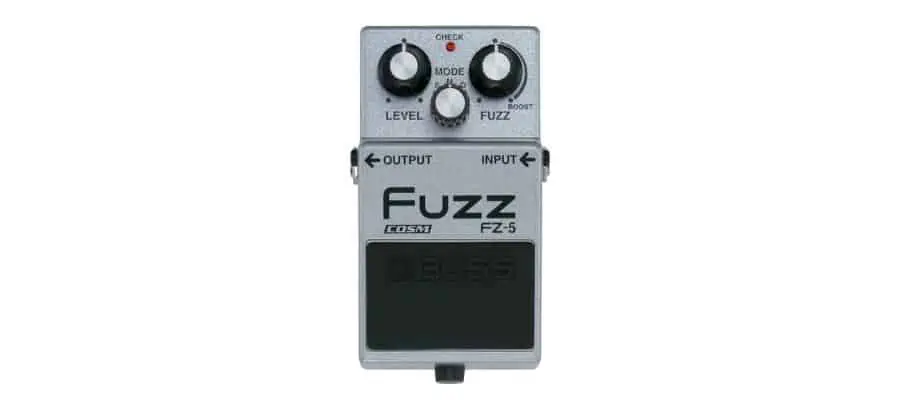
With the Californication album, John switched from Dunlop Fuzz Face to the Boss FZ-3 Fuzz pedal. He used the pedal in the studio and on the stage frequently, especially in the Californication era.
“Black Russian” Big Muff Pi V8
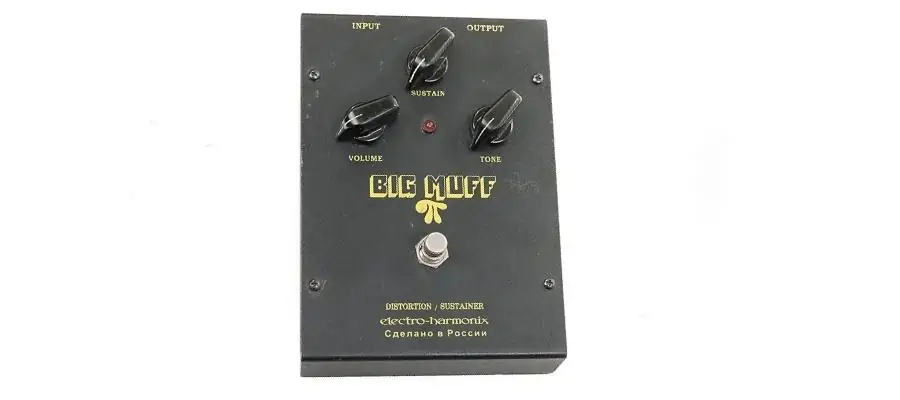
During the Californication tour, John’s setup had a “Black Russian” Big Muff Pi V8. This exact pedal is the last Big Muff Pi produced in Russia.
MXR Phase 100
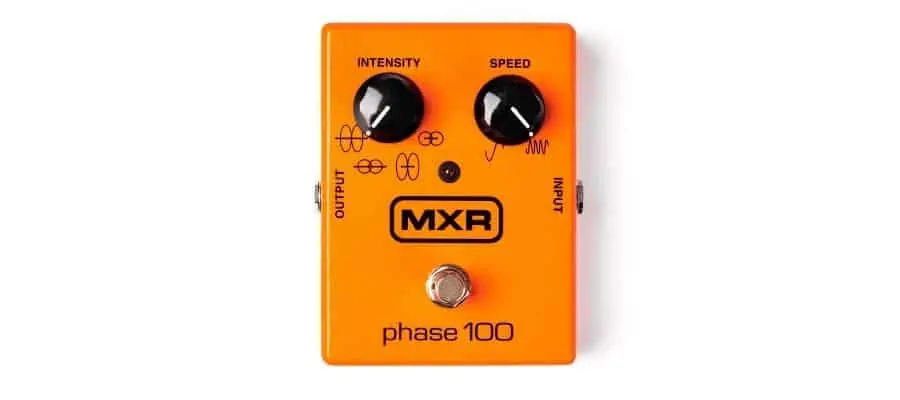
John borrowed an MXR Phase 100 for the recording of the ending of the song Parallel Universe from the 1999 album Californication. Later, he bought an MXR Phase 90 for himself.
DigiTech PDS 1002 Digital Delay
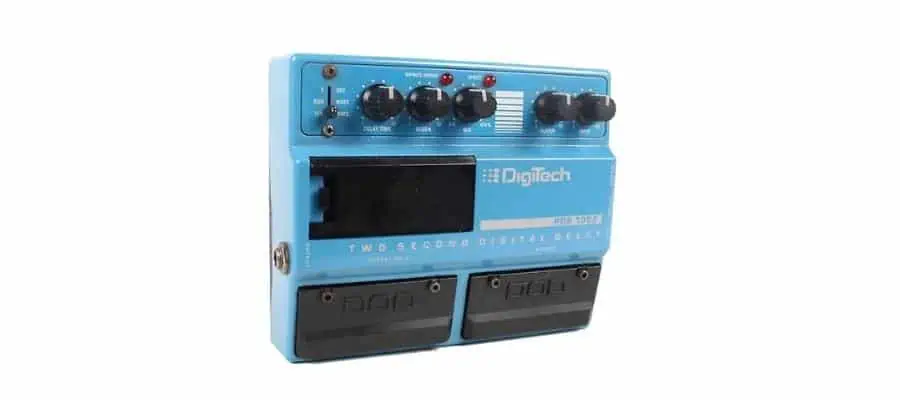
During the By The Way tour, John started using DigiTech PDS 1002 Digital Delay to add some delay to his tone when necessary.
Line 6 DL-4 Delay Modeler
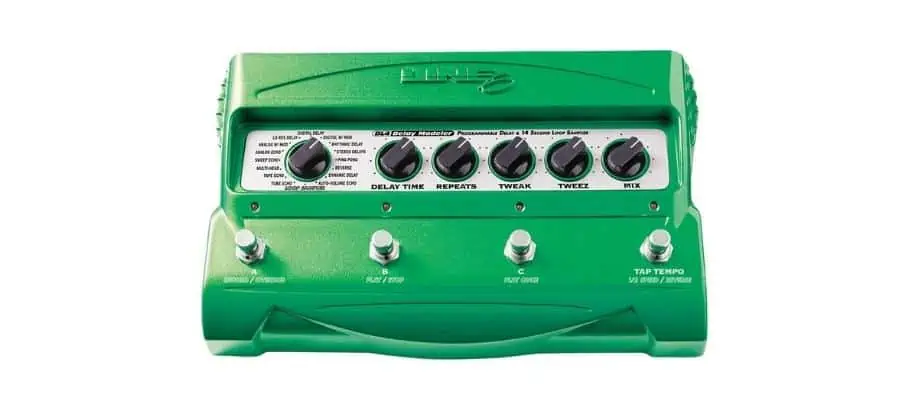
John was combining the DigiTech PDS 1002 Digital Delay with a Line 6 DL-4 Delay Modeler, which can be heard in the song Don’t Forget Me.
Line 6 FM4 Filter Modeler
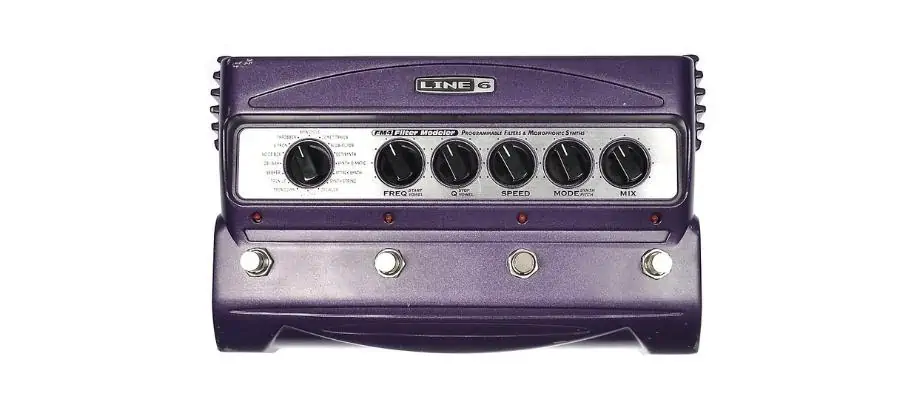
John started using Line 6 FM4 Filter Modeler during the By The Way studio sessions, and since then, it has become a regular member of his setup. His use of the pedal can be heard in the track Throw Away Your Television.
Boss FV-50L Volume Pedal
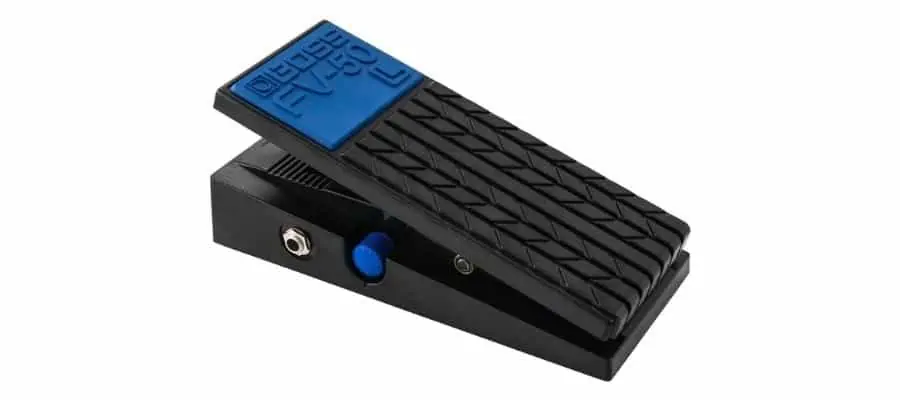
John used a Boss FV-50L Volume Pedal throughout the By The Way era in the studio and on the stage. The volume effects in the song Venice Queen was created with this pedal.
EHX Big Muff Pi
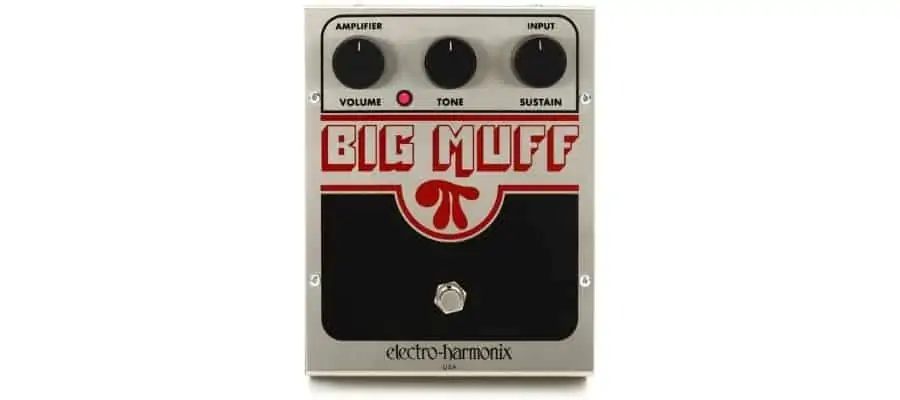
Sometime during the By The Way tour, John replaced the old Russian Big Muff Pi with the newer American version. He used it until the Stadium Arcadium tour. He switched to the English Muff’n during the Stadium Arcadium era.
Moog MF-103 12-Stage Phaser
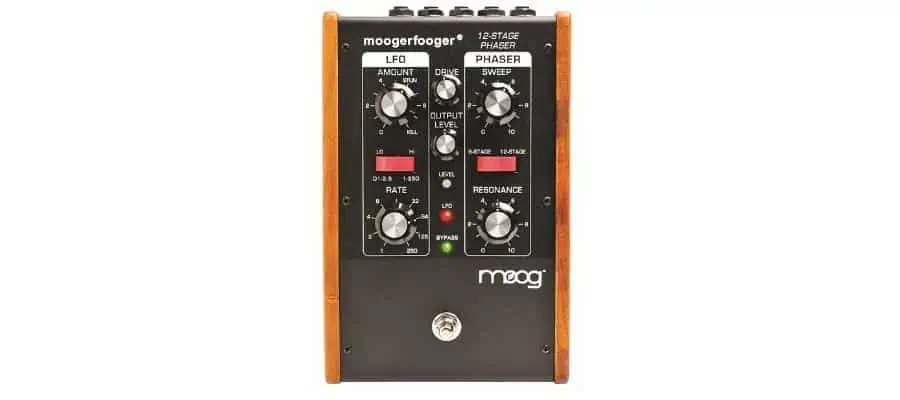
In the By The Way tour, John replaced his MXR Phase 90 with a Moog MF-103 12-Stage Phaser, which started the era of Moog pedals in John’s career. From that point, John started using more Moog pedals in his setup.
MXR Micro Amp
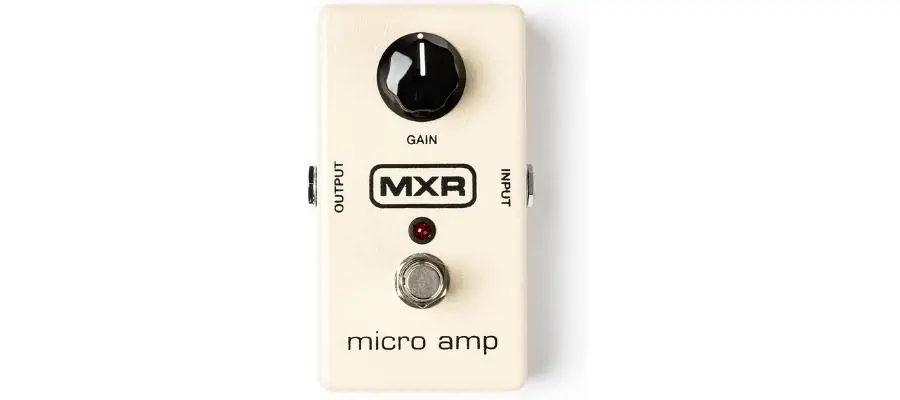
To crunch up his clean tone, John started using the MXR Micro Amp pedal in the By The Way tour. He used the pedal until his departure from the band after the Stadium Arcadium tour.
Boss PSM-5
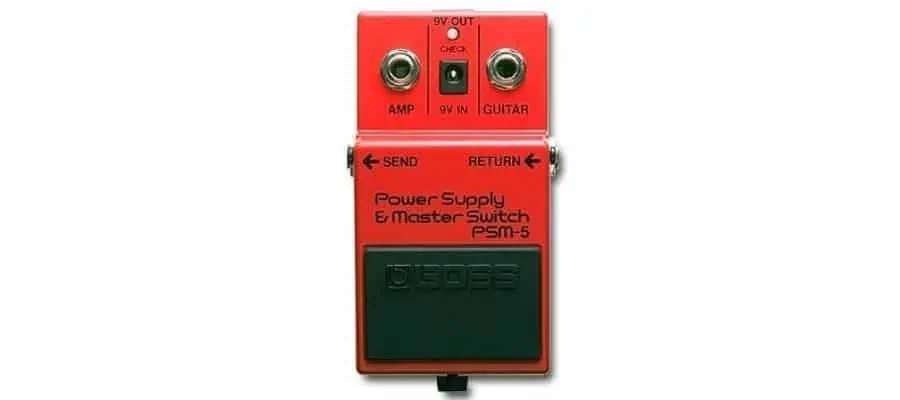
John was using a Boss PSM-5 to activate three different distortion pedals at once during the By The Way era.
Fender ’63 Reverb Tank
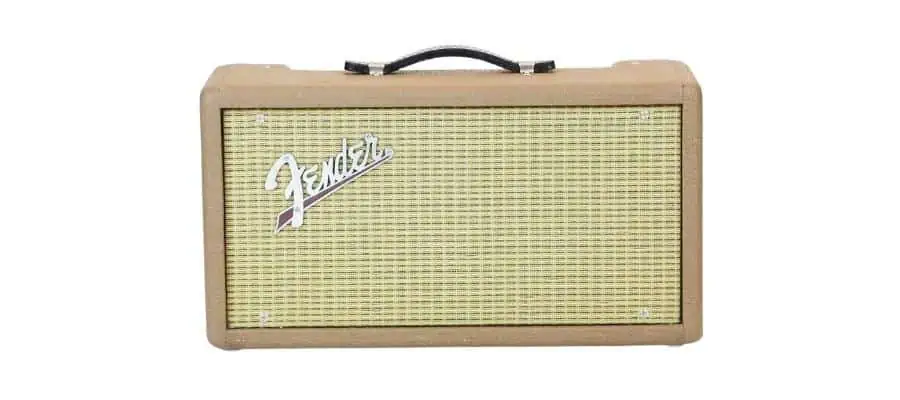
During the By The Way tour, a Fender ’63 Reverb Tank is seen in front of John Frusciante’s pedalboard. He was combining it with an EHX Holy Grail reverb to get his reverb effects.
EHX Holy Grail V1 Reverb
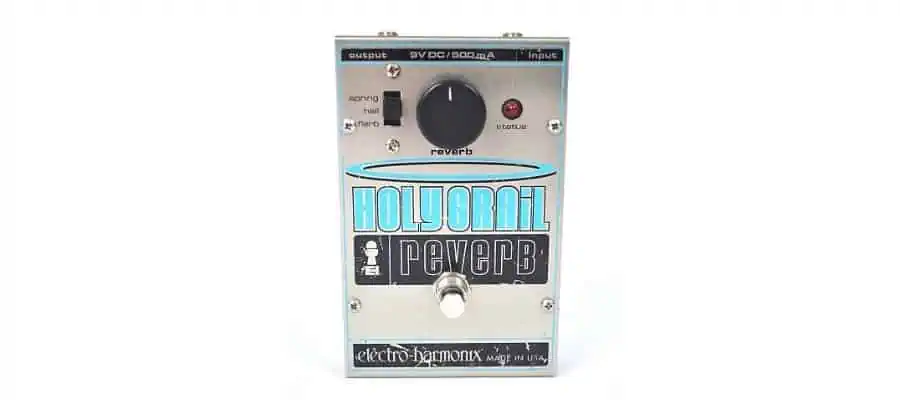
In the By The Way studio sessions, John started using the EHX Holy Grail V1 Reverb for his clean tones. He liked the pedal and continued using it in his live setup as well as the studio sessions of Stadium Arcadium. The pedal can be heard in the songs such as Hey, Animal Bar (set to spring mode), and Strip My Mind.
Dunlop 535Q Cry Baby Multi-Wah
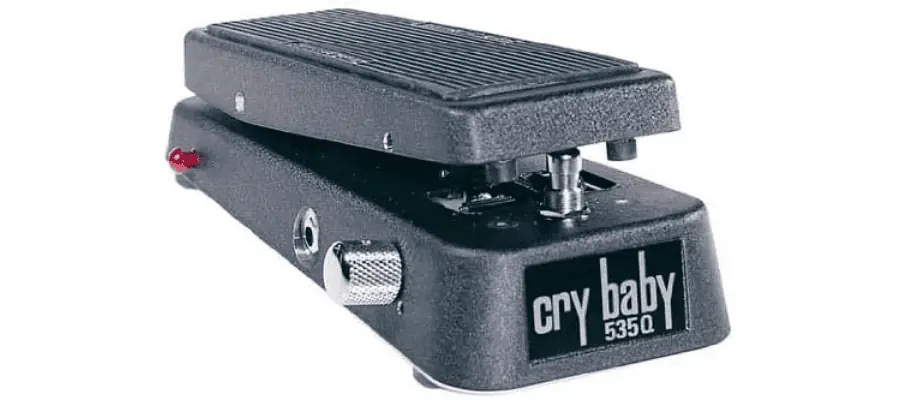
In around late 2004 and early 2005, John experimented with the Dunlop 535Q Cry Baby Multi-Wah instead of his Ibanez Wah, but it was more like a backup pedal.
EHX POG
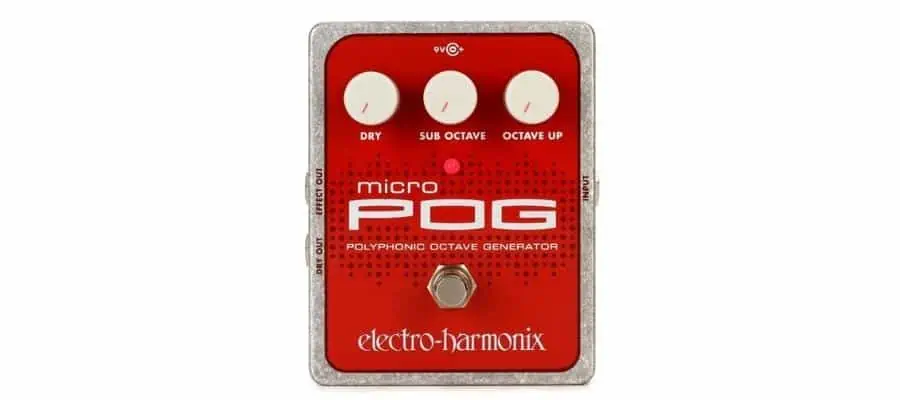
To add multiple octaves and make the guitar sound like an organ, John got the help of an EHX POG pedal, which he used in the ending part of Snow (Hey-Oh).
Moog MF-105 MuRF
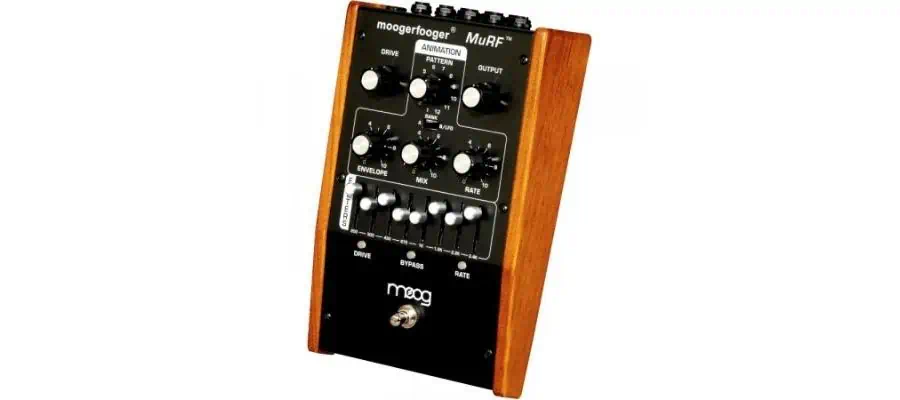
For the solo of the song Tell Me Baby, John used a Moog MF-105 MuRF. He also used the effect for the second verse of Dani California.
EHX Electric Mistress Flanger
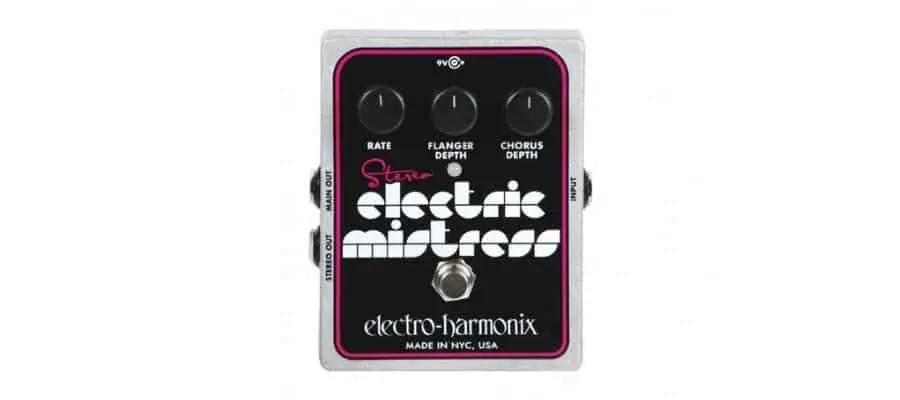
John was using an EHX Electric Mistress Flanger for some parts of his songs. The most obvious one is the bridge section of the song Hard to Concentrate, from RHCP’s 2006 album Stadium Arcadium.
Moog MF-101 Low Pass Filter
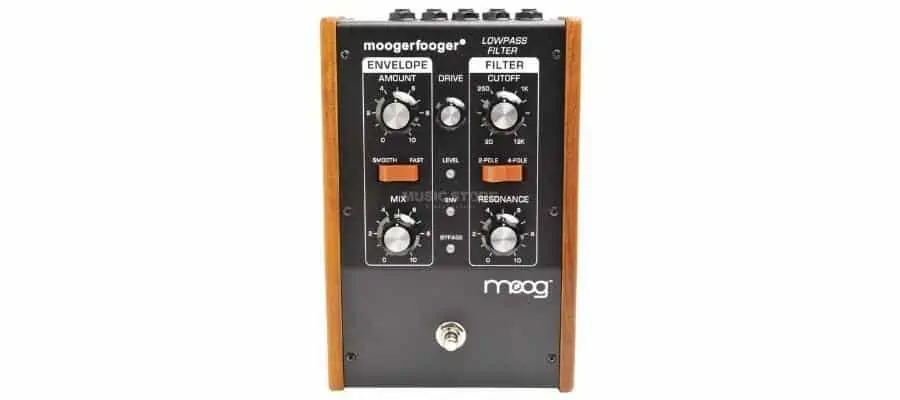
Another MOOG pedal John used was Moog MF-101 Low Pass Filter. It can be heard in the song Dani California during the second part of each verse. The wobbly sound is created with this pedal.
Moog CP-251 Control Processor
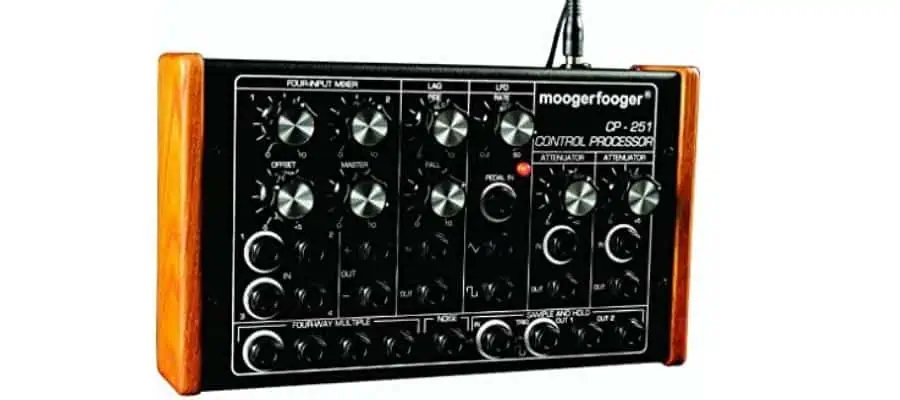
With the Stadium Arcadium tour, John started using two Moog CP-251 Control Processors on his setup to control some of his Moog pedals.
Moog Expression Pedal
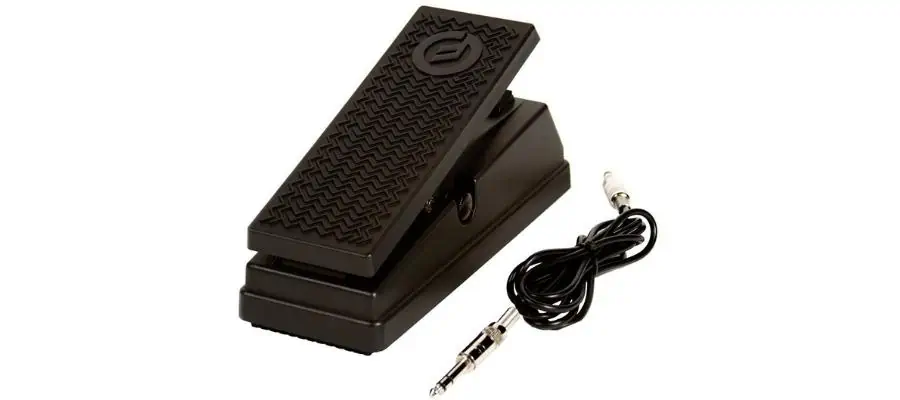
Another Moog choice of John was with the expression pedals. He was using several Moog Expression Pedals controlling different effects.
Guyatone Flip VT-X Vintage Tremolo
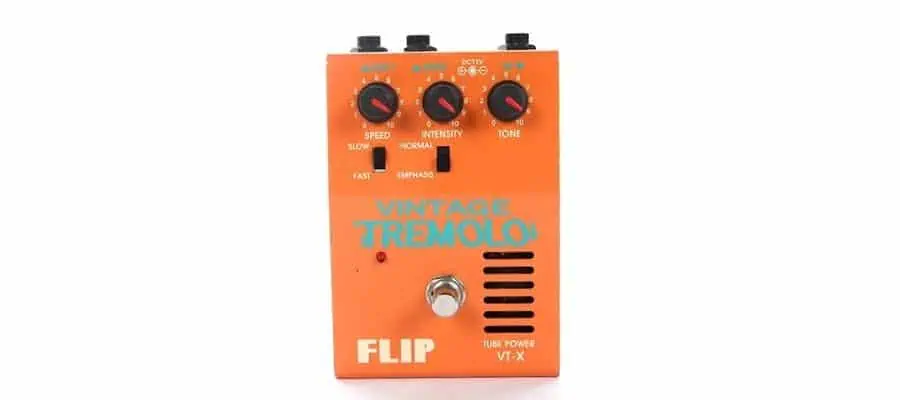
John was using a Guyatone Flip VT-X Vintage Tremolo pedal in around 2006 in his live setup. The pedal functions as a preamp-boost pedal that flips the amps phase.
DigiTech Whammy 4 Pitch Shifter
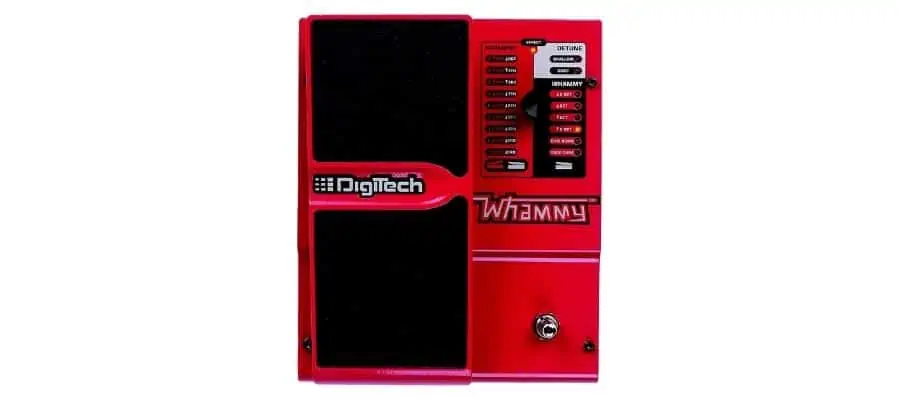
During the Stadium Arcadium tour, John had a DigiTech Whammy 4 Pitch Shifter in his setup. However, he used it very rarely in some parts of the songs.
fOXX Fuzz Wah Volume
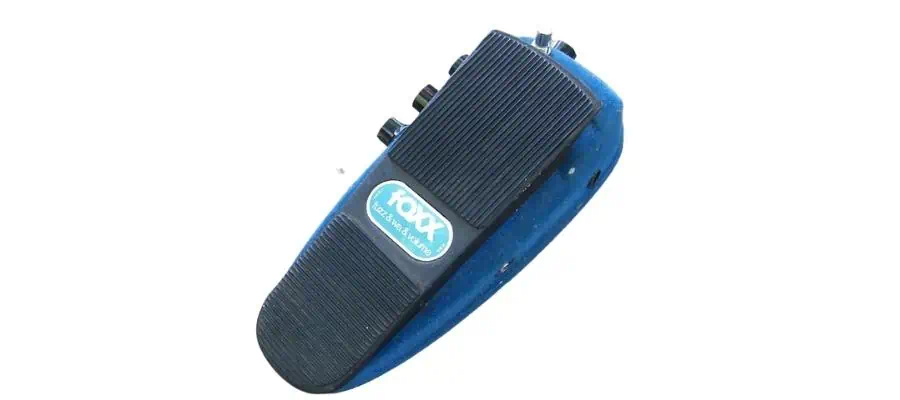
fOXX Fuzz Wah Volume is a weird pedal that has a volume pedal and a wah on the same stomp, along with a built-in fuzz and an octave effect. Probably, John wanted to have it during the Stadium Arcadium tour for more versatility, but he rarely used it.
EHX English Muff’n Tube Distortion
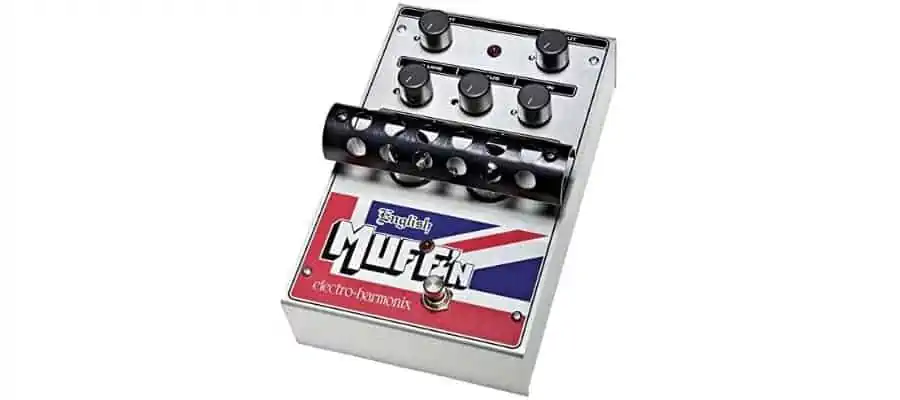
Although John used a Big Muff Pi in the recording sessions of the Stadium Arcadium album, for the tour, he changed to the EHX English Muff’n Tube Distortion for some reason.
MXR DynaComp
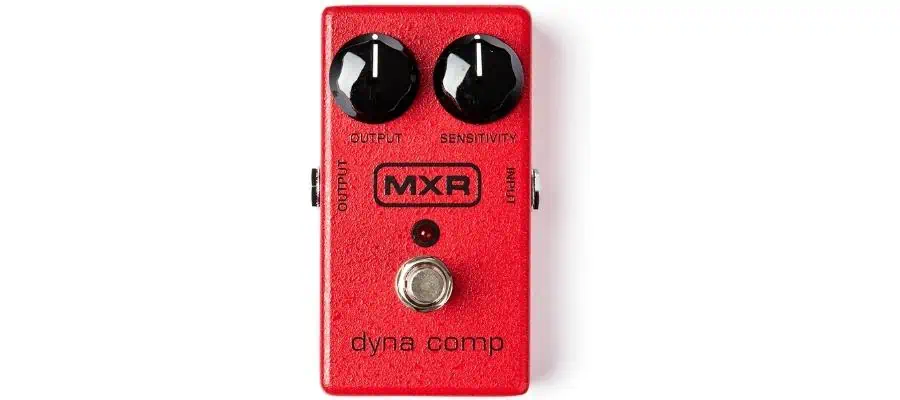
When John rejoined RHCP in 2021, he started using an MXR DynaComp to get more sustain out of his clean sound.
MXR M300 Reverb
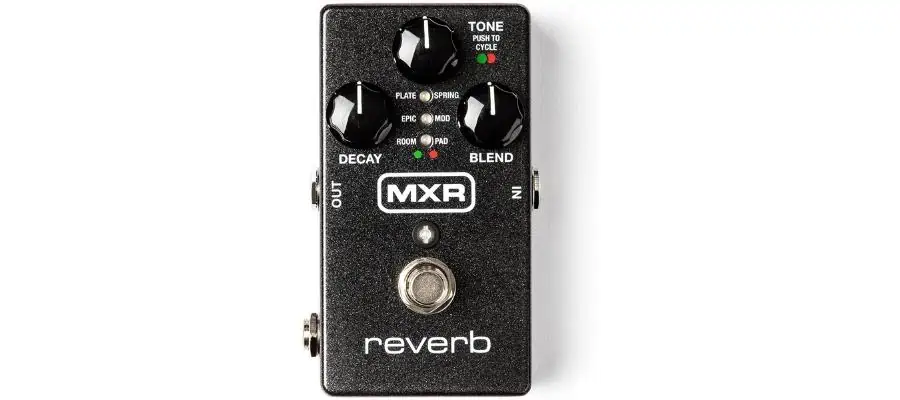
Another pedal John started using in his 3rd RHCP period was the MXR M300 Reverb. He is using it on the stage for long reverb but prefers room reverb in the studio.
John Frusciante’s Accessories
Levy’s MSSC8-BLK Guitar Strap
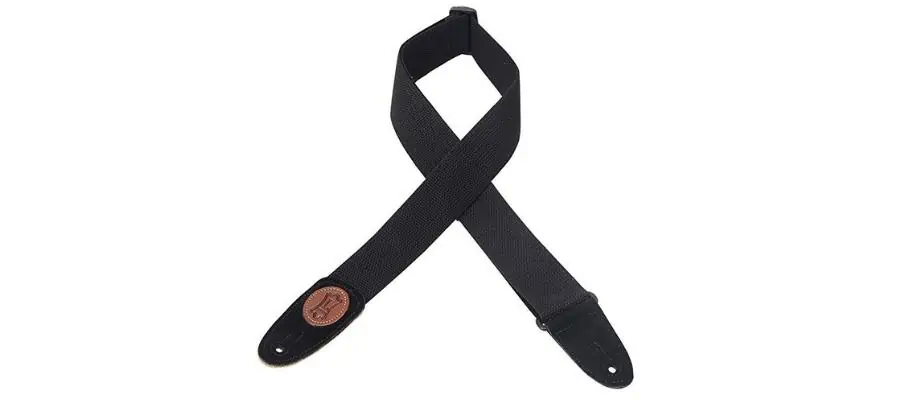
John often uses Levy’s Guitar Straps, which are pretty cheap regular cotton straps.
Ernie Ball Polypro Guitar Strap
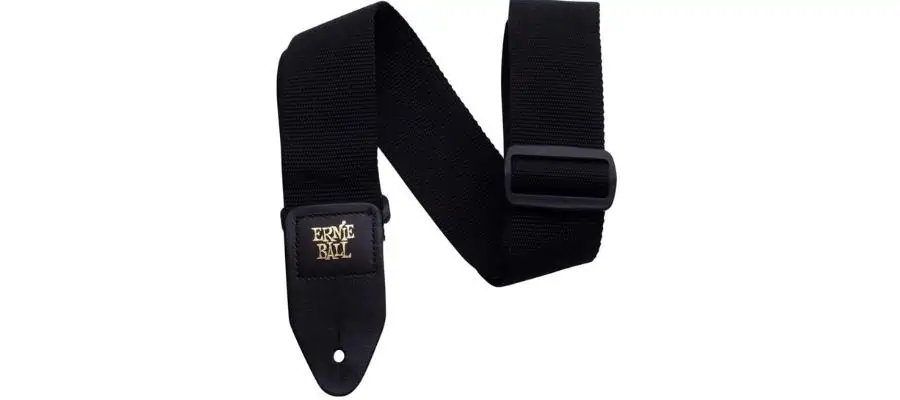
Recently John started using Ernie Ball Polypro Guitar Straps occasionally.
Schaller Strap Locks
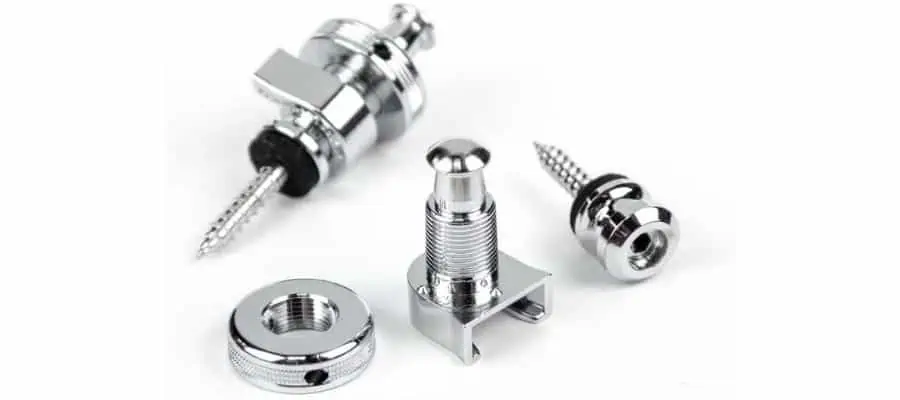
All of John’S guitars are equipped with Schaller Strap Locks, which are considered one of the best strap locks.
Dunlop Tortex 0.60mm Picks
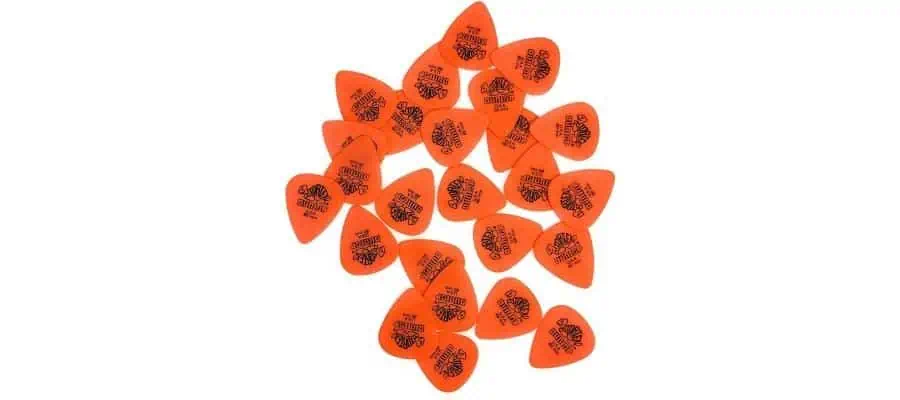
John is regularly using Dunlop Tortex 0.60mm Picks with the RHCP logo on top of them.
What Is Special About John Frusciante’s Guitar Tone?
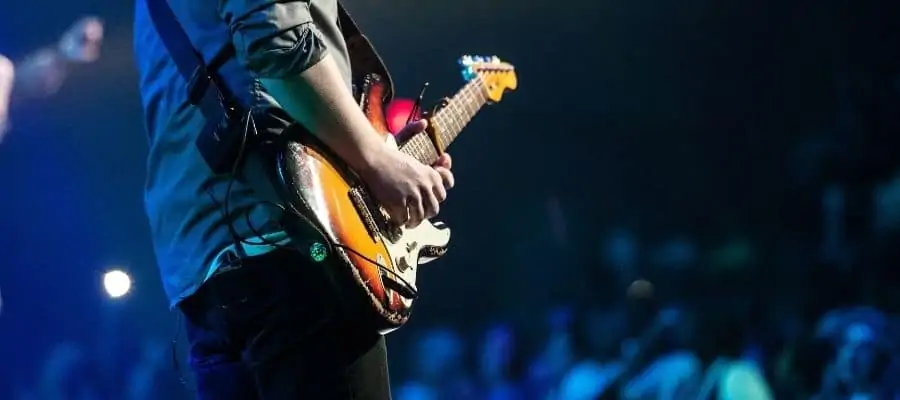
John Frusciante is one of the best and most unique guitar players today. His approach is more passionate and emotional rather than technical. He connects with the music and audience with great melodic lines, simple yet striking licks as well as catchy riffs.
His style sits somewhere between acid-rock, funk, and jazz. With the Blood Sugar Sex Magik album, his style and character were getting shaped as he evolved a unique tone and playing approach with his acid-rock style combined with a funky groove and a unique tone. His style becomes very apparent and recognizable in the hit single Give it Away.
In his first years, he was a more relaxed musician who was letting his mistakes into the records, but after he rejoined the band in the Californication era, he was a perfectionist. He had a more refined tone that did not have loose ends. He kept his funky and jazzy elements but transformed his tone to a more mellow sound, with the experience of the depression and drug addiction he suffered for years.
This change was highly apparent in many songs such as Around the World, Scar Tissue, Otherside, and Californication. His playing style was simple with basic licks, but it was extremely melodic and striking.
After the By The Way era, which was a very pop-oriented album, RHCP started opening their style to new influences as John Frusciante was also experimenting with new tones, playing styles, and techniques.
He deployed elements from ska and flamenco to his tone and playing, which could be heard in the songs such as On Mercury and Cabron. And finally, the Stadium Arcadium album is where he really opened himself to new sounds as he kept his original acid-rock origins but incorporated many elements from a wide range of genres like funk, jazz, ska, reggae, flamenco, rap, and R&B.
His sound is quite shiny, rounded and bright without much bass end in it, and the gain is not very high without overwhelming the tone. It has a nice balance which acts as the root tone, while for different songs, different effects and some adjustments come into the play.
In short, John Frusciante’s guitar tone is a unique and magical tone with an acid-rock, funk, and jazz-inspired sound and lots of experimentation playing with elements from different genres. He mainly goes with the classic Marshall-Fender Stratocaster combination with a vintage sound but adds many effects to experiment and explore new areas for particular songs.
If I had to summarize John Frusciante’s tone, I would use the words magical, brave, open, and jazzy, as well as funky. He has one of the most iconic tunes of the modern rock era.
How To Sound Like John Frusciante
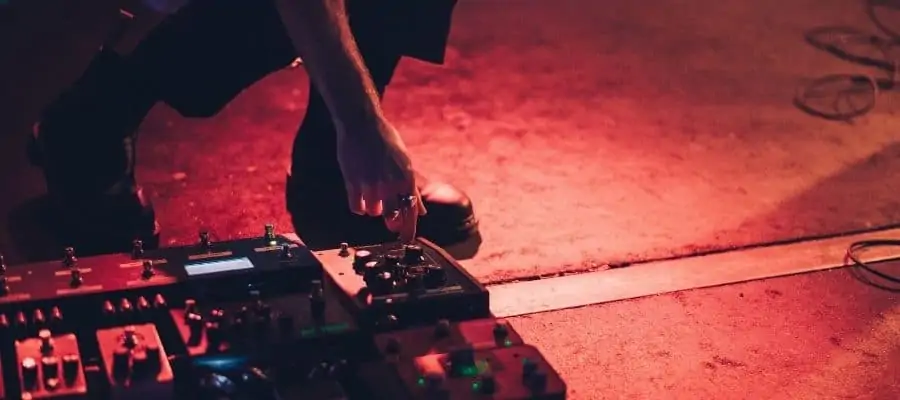
To sound like John Frusciante is not a complex job, but it is not easy as well. As he experiments a lot with different effects, slightly altering his tone for each particular project, it is a bit hard to create one tone that goes for all.
But, his root tone builds upon the Fender Strat-Marshall Silver Jubilee combination, which gets you close enough, and you can catch his different tones in different songs by adding some effects with pedals.
Guitar
So, starting with the guitar, John Frusciante is highly associated with Fender Stratocasters, as we all know by now. He uses vintage Fender Strats in the studio and on the stage mainly. So, you will need a Fender Strat with a triple single coil pickup configuration to get his tone.
You can use Seymour Duncan SSL-1 Pickups to catch his more mellow tone like in the songs such as Zephyr Song. But, regular Fender Strat pickups will do the trick, too.
So, there is not much to say about the guitars. He also used Telecaster and John’s Gretsch White Falcon in some tracks like Californication and Otherside, which have the distinctive sound of White Falcon Filtertron Pickups. But, for John, Strats were always the first choice. Even though he may use different guitars in the studio, he uses Strats in the live settings.
Amp – Amp Settings
While John used many amps throughout his career, the shining star for his tone was the Marshall 25/55 Silver Jubilee. He used two of these amps, as he used one for clean tones and the other for overdriven tones. And he was pairing these amps with a 1967 model Marshall Major. This was his live setup for most of his career.
In the studio, he was relying on the Marshall Major cab plus a vintage Marshall Super Bass 100-watt amp head or, again, a Silver Jubilee.
So, he is a tube amp guy like many other guitarists. To get close to his tone, you will need a tube amp, or if you are on a budget, you will need a pedal or an amp modeler that can mimic the vintage tube amp sound.
Coming to the amp settings, he likes to have a bright and rounded sound without much bottom-end. The gain is always moderate without overwhelming the tone. So, the amp setting should have plenty of treble, a little bass, and the mids and gain somewhere in the middle.
As the settings will vary depending on your amp choice, I am giving the starting point so you can tweak the settings a little bit to get closer to John’s tone. The bass should be around 3, the middle around 4 to 6, treble 7 or 8, output volume 7 or 8, gain around 5, and presence 4 or 5. These are the setting based on the Silver Jubilee, so if you are using a different amp, start with these settings and try to adjust them a little to find the correct tone.
Pedal Effects – Pedal Settings
John Frusciante uses a wide range of pedals. He has his main root tone with the Fender Strat-Marshall tube amp combination, but the spices that color his tone for different tracks are the pedals.
For a basic setup to replicate his tone, you will need an Ibanez WH-1 wah pedal, BOSS DS-2 Turbo Distortion, BOSS CE-1 Chorus Ensemble pedal, Line 6 DL4 Delay Modeler, Electro Harmonix Holy Grail Reverb, and MXR M133 Micro Amp.
When John needs some punch in his tone, like in the solo section of Dani California, he uses the Boss DS-2 to add some distortion to his tone.
MXR M133 is for when he wants to boost his clean tones. MXR M133 is a great pedal to boost the tones without coloring them. For parts with Wah, he uses the WH10, which is a great wah pedal that lets you customize the depth and set it to true, buffered, or bypass mode.
For reverb and delay sections, Frusciante uses Boss CE-1 and Line 6 DL4. He does not have a setting that he constantly uses. Instead, he adjusts and changes the effect settings depending on the songs.
However, using this equipment, you can get any of his tones.
Playing Style And Techniques
To sound like John Frusciante, the equipment is not enough as he has a very distinctive playing style which is a big part of his sonic character. He is considered to be one of the most influential guitarists of the last decades.
He has a unique funk-rock playing style with a real percussive, funky sound. For this style, the picking hand is more important than the fretting hand as the guitar is treated almost like a percussion instrument. Like his playing style in the song Can’t Stop, for example.
He often uses percussive 16th note mutes to create his funky grooves. He mainly uses dominant chords for his compositions, especially dominant 9ths, which are the most used chords in funk music.
But, in his last era after the By The Way album, he applied influences from other genres in his music, which led him to use more major and minor chords.
Another characteristic element of his playing is the use of two-note chord-melody parts. He picks a bass note on a low string with his thumb while using another finger for a syncopated melodic figure on a higher string on top of the bassline.
He also likes to use his thumb over the fretboard and create unique chord voicings, as we hear in Under The Bridge. He borrowed this technique from Jimi Hendrix.
His approach to solo lines is more emotional and passionate than technical. He puts melody over shredding or technique as he creates great-sounding easy-to-play solos. He mainly uses pentatonic and blues scales with his unique, expressive phrasing, which makes him stand out among other players. The best example of this is his solo in Californication.
Just like Jimi Hendrix, he relies heavily on the CAGED chord system when playing. He uses hammer-ons and pull-offs a lot and favors bold, simple minors and majors when he focuses on the rhythm work.
In short, his style is characterized as playing simple yet melodic lines with his unique phrasing and percussive funk-rock picking hand movements.
John Frusciante Guitar Rig Examples
Budget
Guitar – Squier Affinity Stratocaster
- Thin and lightweight body
- Three Squier single-coil pickups
- 2-point tremolo bridge
- Slim and comfortable “C”-shaped neck profile
As John’s tone mainly relies on the Strat-Marshall tube amp sound, an entry-level Strat is the best choice to get close to his sound if you do not want to spend a lot on the gear.
Amp- Positive Grid Spark
- Smart Jam learns your style and feel, generating authentic bass and drums...
- Access to 50,000+ amp-and-FX presets on ToneCloud, powered by...
- Import your music from Spotify, Apple Music or YouTube and Spark’s smart...
- Powerhouse 40 Watt combo includes onboard tone stack controls, effects,...
The cost-effective digital modeling amp Positive Grid Spark can get you close enough to the vintage Marshall tube amp tones, which you need to replicate John’s tone. It won’t be the same, but for the price range, this is as good as it gets.
Pedals – Ibanez WH10 V3 Wah Pedal
- Wah Guitar Effect Pedal with Switchable Bypass
- Multiple Feedback Op Amp Circuit
- Range Switch
- Depth Knob
You do not need any pedals with this amp. However, if you will be playing a song that requires a wah pedal, it would be a good idea to get John’s exact wah pedal; Ibanez VH-10.
Mid-Range
Guitar – Fender Player Stratocaster
- Alder Body with gloss finish
- Three player Series single-coil Stratocaster pickups
- Modern C"-Shaped neck profile
- 9. 5"-Radius Fingerboard
If you have a bit more to spend, a Fender Player Stratocaster is a great choice to play John Frusciante-style guitar and replicate his vintage Fender Stratocaster.
Amp – Marshall ORI20C Origin 1×10″ 20-watt Tube Combo Amp
- 20 Watt all valve combo
- Switchable high, Medium, & low power output section
- Tilt control - blends bright & normal sounds
- 10 inch Celestion V type speaker
As John Frusciante uses vintage Marshall tube amps to get his tone, you would need to spend a lot of bucks to get the same amplifier. Instead, you can go with a more budget-friendly Marshall tube combo amp, Marshall ORI20C Origin 1×10″ 20-watt. If you need more power, you can also choose the 50-watt version of the amp, which comes at a slightly higher price.
Pedals – Boss DS2, Ibanez WH10 V3 Wah, Boss CE-5, TC Electronic Flashback 2 X4
- Disttion Pedal f Guitar
- Classic BOSS distortion tones with added Turbo modes
- Turbo Mode I produces warm and mellow distortion with flat frequency...
- Turbo Mode II provides biting distortion with a mid-range boost, perfect...
- Wah Guitar Effect Pedal with Switchable Bypass
- Multiple Feedback Op Amp Circuit
- Range Switch
- Depth Knob
- Stereo Chus Ensemble Pedal f Guitar
- Mono input and Stereo outputs for connection to dual amps or for studio use
- Offers Effect Level, Rate, Depth and Filter knobs for complete control
- Produces a range of chorusing effects, from subtle to extreme
- 16 delay types
- Three presets
- Tap Tempo
- Tone Print Enabled
To have the versatility in your hand to play any RHCP song, you can go with the essential pedals in John Frusciante’s setup. The Boss DS-2 and Ibanez WH10 V3 Wah are the exact pedals he is using, while Boss CE-5 and TC Electronic Flashback 2 X4 are the more affordable alternatives to his Boss CE-1 and Line 6 DL4.
High-End
Guitar – Fender Custom Shop 1962 Vintage Custom Stratocaster
No products found.
If you have the budget, you can purchase the same vintage Stratocaster John used mainly throughout his career. He is still using the guitar as it is his favorite one. The Fender Custom Shop 1962 Vintage Custom Stratocaster is pretty similar to his instruments, with the only difference being the maple neck instead of the rosewood of John’s guitar.
Amp – Marshall Silver Jubilee 100-Watt & Marshall 1960B 300-watt 4×12″ Straight Extension Cabinet
- 100-watt Reissue Tube Guitar Amplifier Head with High/Low Output Switching
- 4x12" Closed-back Cabinet with Celestion G12T-75 Speakers
- 4/8/16-ohm
- 300-watt
As John’s tone mainly relies on the Vintage Stratocaster and Marshall Silver Jubilee combination, completing the combo with the Marshall Silver Jubilee 100-Watt is a perfect choice. You can use a Marshall 1960B 300-watt 4×12″ Straight Extension Cabinet as John does as the cab of choice.
Pedals – Boss DS2, Ibanez WH10 V3 Wah, Boss CE-2W, Line 6 DL4, MXR M133
- Disttion Pedal f Guitar
- Classic BOSS distortion tones with added Turbo modes
- Turbo Mode I produces warm and mellow distortion with flat frequency...
- Turbo Mode II provides biting distortion with a mid-range boost, perfect...
- Wah Guitar Effect Pedal with Switchable Bypass
- Multiple Feedback Op Amp Circuit
- Range Switch
- Depth Knob
- Premium all-analog circuitry with bucket-brigade (BBD) delay line
- Rate and Depth knobs provide fine sound adjustment in both pedal modes
- Special edition Waza Craft pedal delivers the ultimate BOSS tone experience
- 3 programmable presets and on-board Tap Tempo
- True Bypass switching, so your direct tone is exactly that; direct from...
- Expression Pedal Input - for real time control of all effect settings....
- DL4 runs in discrete stereo, both inputs and outputs, so Left stays left...
- Adds a preset amount of gain with a single control
- Boost your signal for lead work
- Perfect for switching between guitars with unmatched output
- Power: Dunlop ECB003 AC adapter or single 9 volt battery
Well, to have the exact setup with John is the best way to get his tones. These are the exact pedals he is using, except the Boss CE-2, as John uses a Boss CE-1. But, it is very hard to find that pedal, so Boss CE-2W can substitute it perfectly.
Conclusion
John Frusciante is one of the best and most influential guitarists of the last decades. His passionate and emotional approach to playing the instrument results in amazing melodic lines, easy-to-play but striking licks, percussive tones with great right-hand funk-rock technique, and magical tones that are fantastic to listen to.
With all of the info discussed in the article, you can get pretty close to his tone, although it will be expensive to replicate it fully. But, with some tweaks and adjustments, you can get pretty close without breaking the bank.
If you found this article useful you may want to save this pin below to your Guitar board
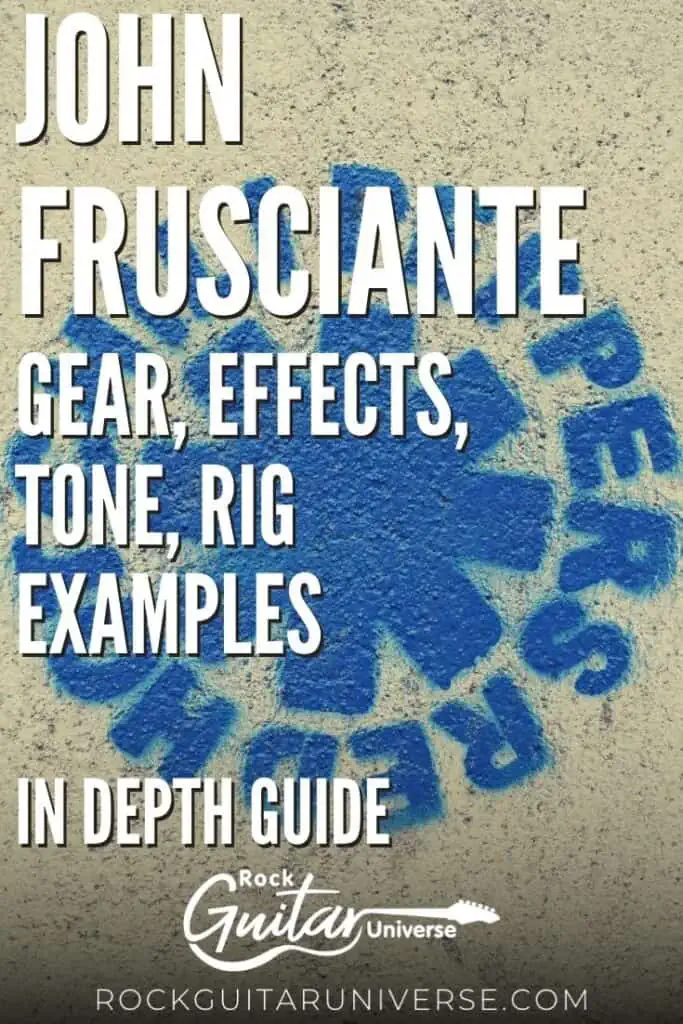
Last update on 2024-07-27 / Affiliate links / Images from Amazon Product Advertising API
Recent Posts
Tuning your guitar to E Flat, also known as E♭ tuning or half-step-down tuning, involves lowering each string by a half step. This creates the notes E♭, A♭, D♭, G♭, B♭, E♭ or D#, G#,...
50 Campfire Guitar Songs To Ignite Your Next Singalong - Chords Included
Gathering around a crackling campfire with friends and a guitar is one of life's simpleest pleasures. Picture yourself strumming the chords as everyone belts out the chorus under a starry sky. From...

